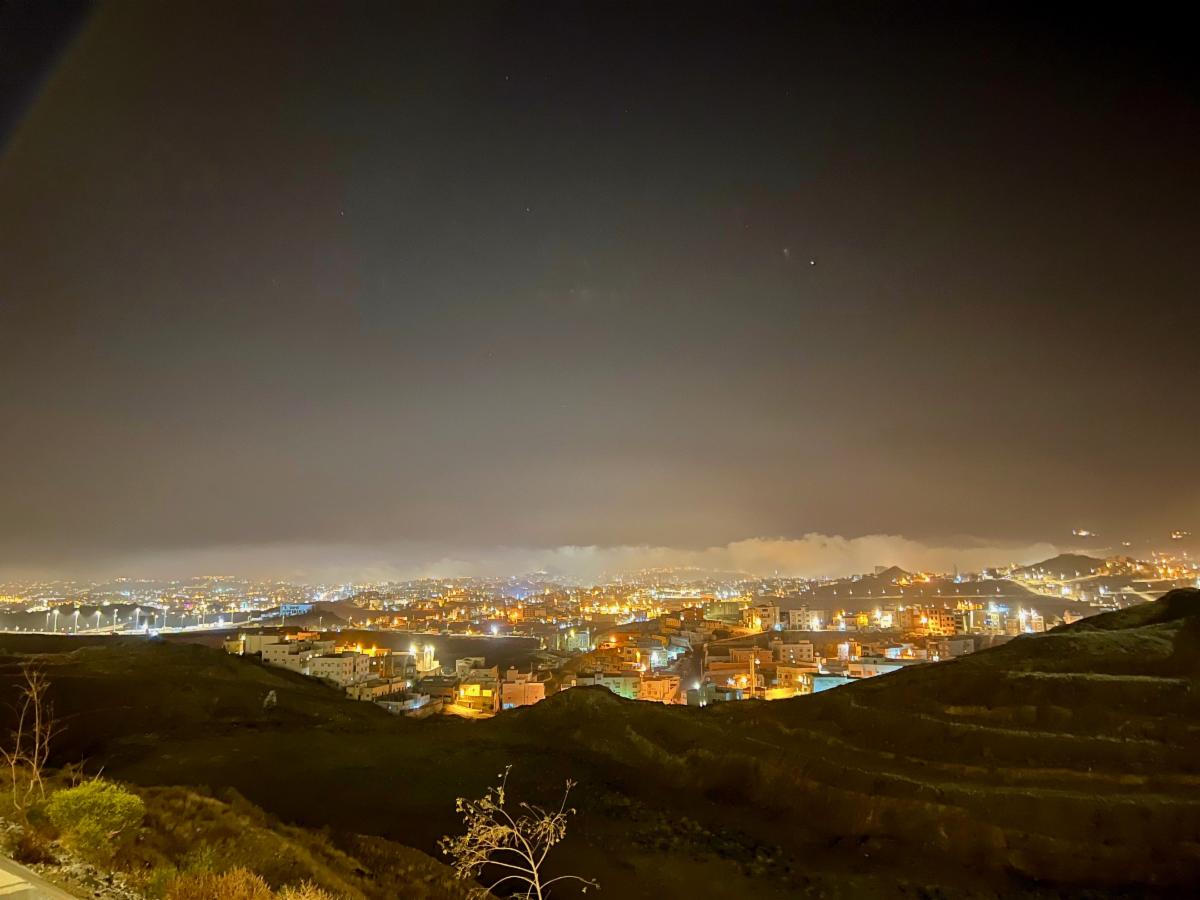Several times in the last decade, I travelled to the then-closed Kingdom of Saudi Arabia as the Executive Vice President at the Huntsman Cancer Foundation.
In 2019, the Kingdom opened its doors and actively started encouraging tourism as part of its Vision 2030 strategic initiative. Increasing numbers of visitors are now discovering that Saudi Arabia is unexpectedly diverse.
There are mountains, beaches, coral reefs, grasslands and forests. Let alone the largest sand sea in the world. It has a human history that stretches back in time more than 7000 years. Tourism and travel bridge people, time, and cultures, leading to deeper understanding.
With the encouragement of HRH Princess Reema Bint Bandar Al Saud, Saudi Arabian Ambassador to the United States, I recently spent 10 weeks traveling throughout Saudi Arabia.
I explored the Kingdom with the purpose of photographing and writing about Riyadh, AlUla, Madain Saleh, Tabuk, Neom, Jeddah, Taif, Jubbah, Hail, Al Khobar, Dammam, Al-Hasa, and Abha in the Asir Region.
This is the first in a series of articles about the Kingdom. It begins in Southwest Arabia – The Asir Region.
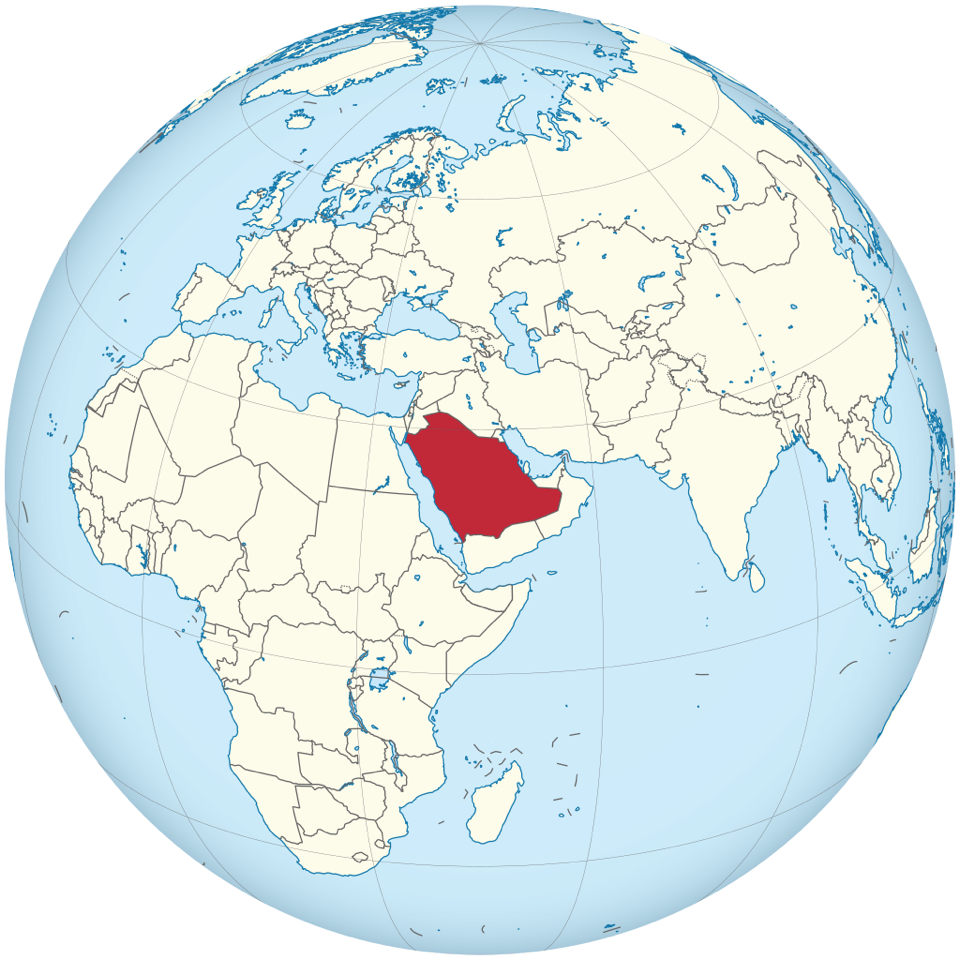
Saudi Arabia is approximately the size of France, Spain, Germany, Italy, United Kingdom (twice), Greece, and Portugal combined. In reference to the United States, its land area is roughly equal to all states east of the Mississippi River.
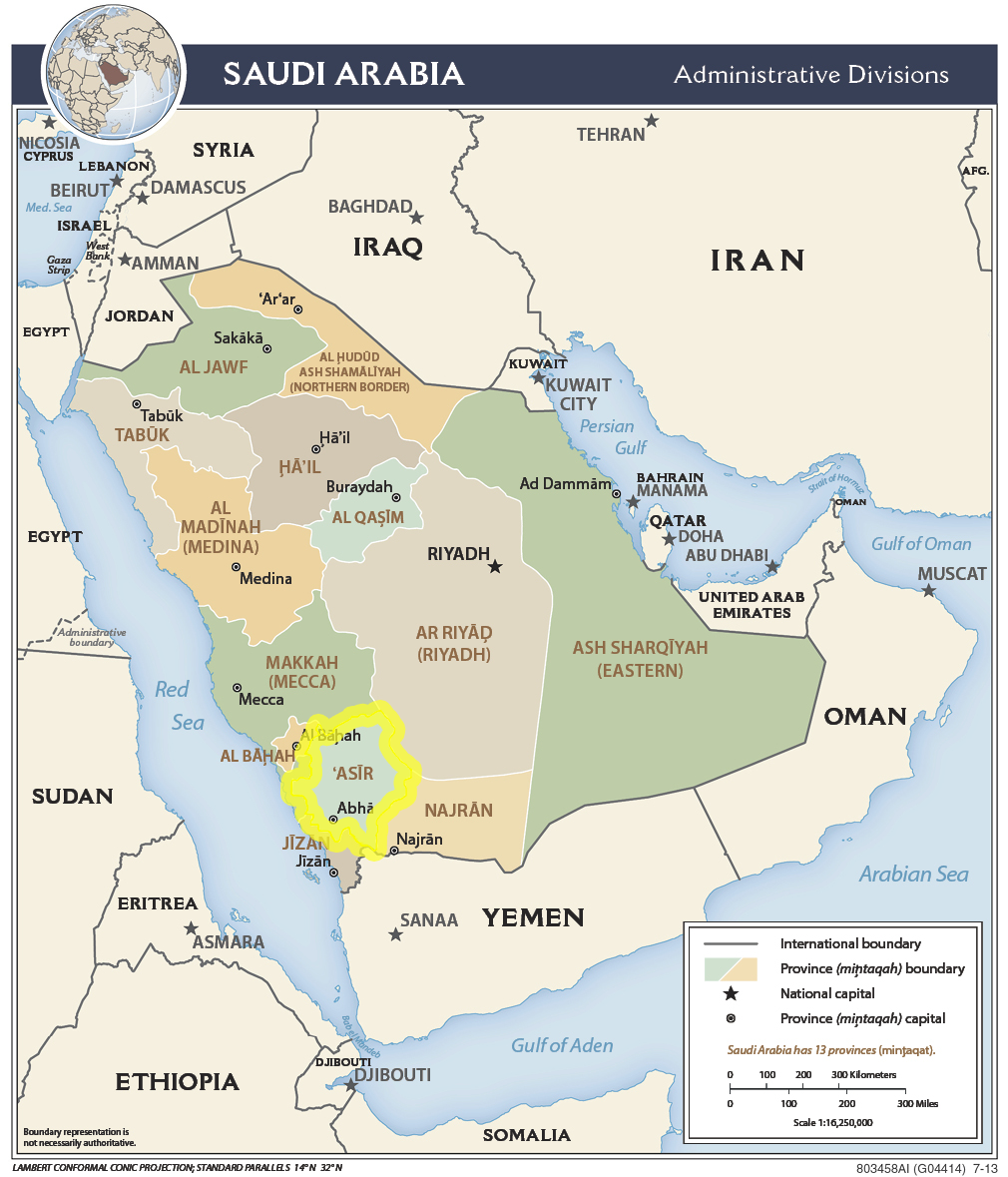
The area of modern-day Saudi Arabia formerly consisted of four distinct historical regions: Hejaz, Najd, Alhasa and Asir. The Asir Mountain range runs north to south, parallel to the southwestern coast of Saudi Arabia. Asir has a short border with Yemen and a coastline on the Red Sea. It is the fourth largest region in Saudi Arabia and encompasses four thousand villages. There are more than 2.2 million residents. Asir is the size of the country of Austria.
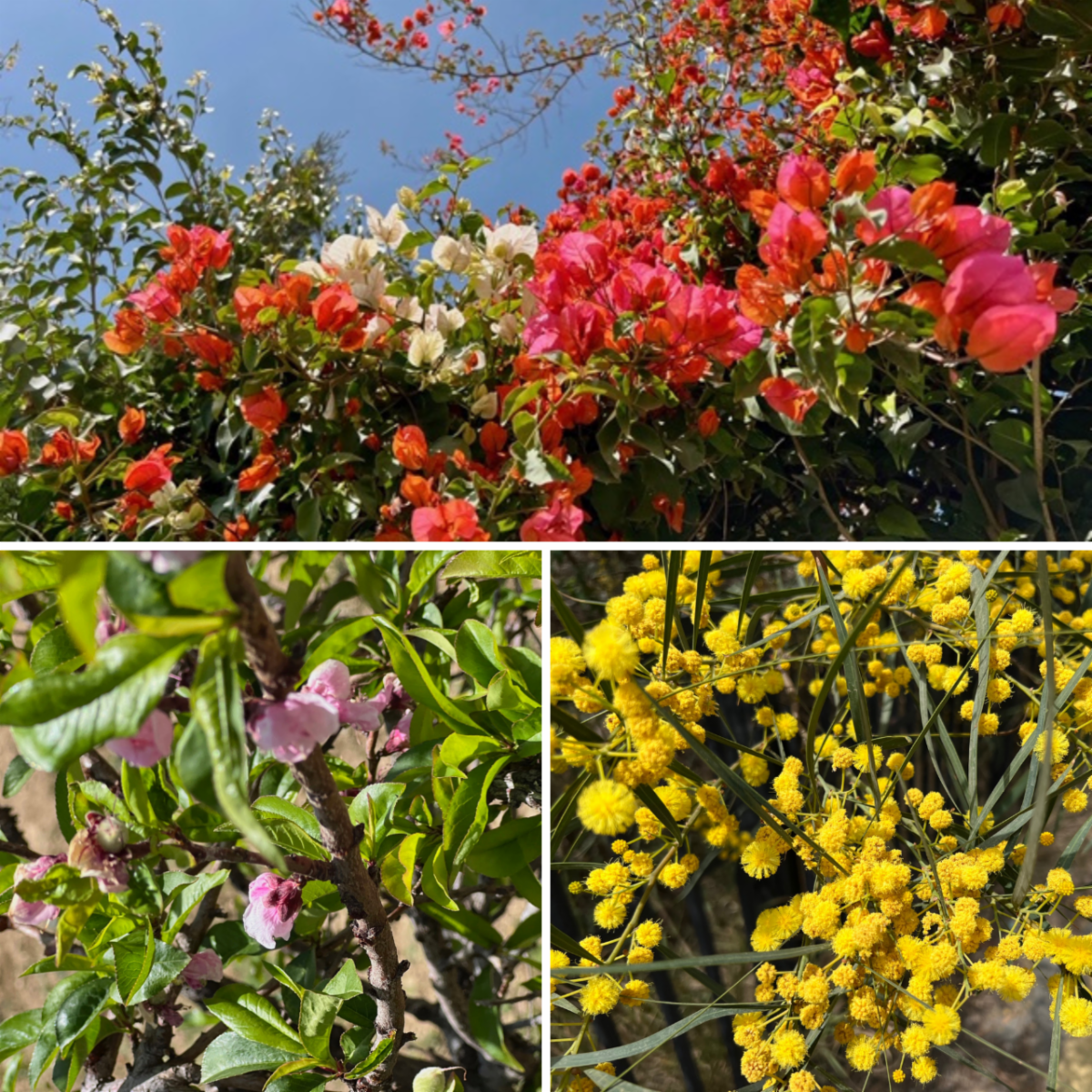
It’s spring in Southwest Saudi Arabia, and green buds are popping on the bushes. Bougainvillea of all colors thrive. Almond and cherry trees are in bloom.
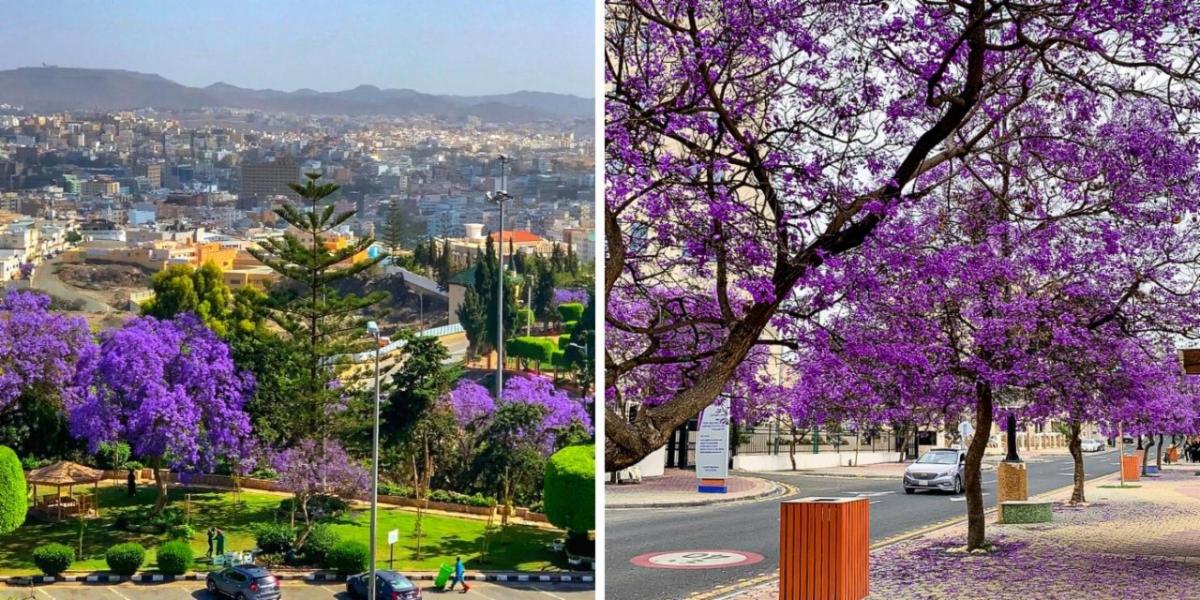
When I arrived in Abha, “The High City,” I reached out to the National Council on U.S.-Arab Relations’ International Advisory Board Co-Chairman, HRH Prince Abdulaziz Bin Talal Al Saud. (I am a member of the National Council’s Board of Directors.) His brother, HRH Prince Turki Bin Talal Al Saud, is the governor of the Asir Region.
Prince Abdulaziz called his brother. The next call was from a deputy in the Governor’s office: Would I join the Governor that evening at 8 pm in his forest camp? Of course.
My driver made his way through a checkpoint. I was greeted and escorted to a large tent where twenty men were seated. They all made eye contact with me, and were warm and welcoming. I greeted them with my right hand on my heart. In turn, each put his hand on his heart. A slight bow of the head. Tradition.
I was seated next to Rahmah Yahya Alrabeai, a professor and a Ph.D. candidate in geography at King Khalid University.
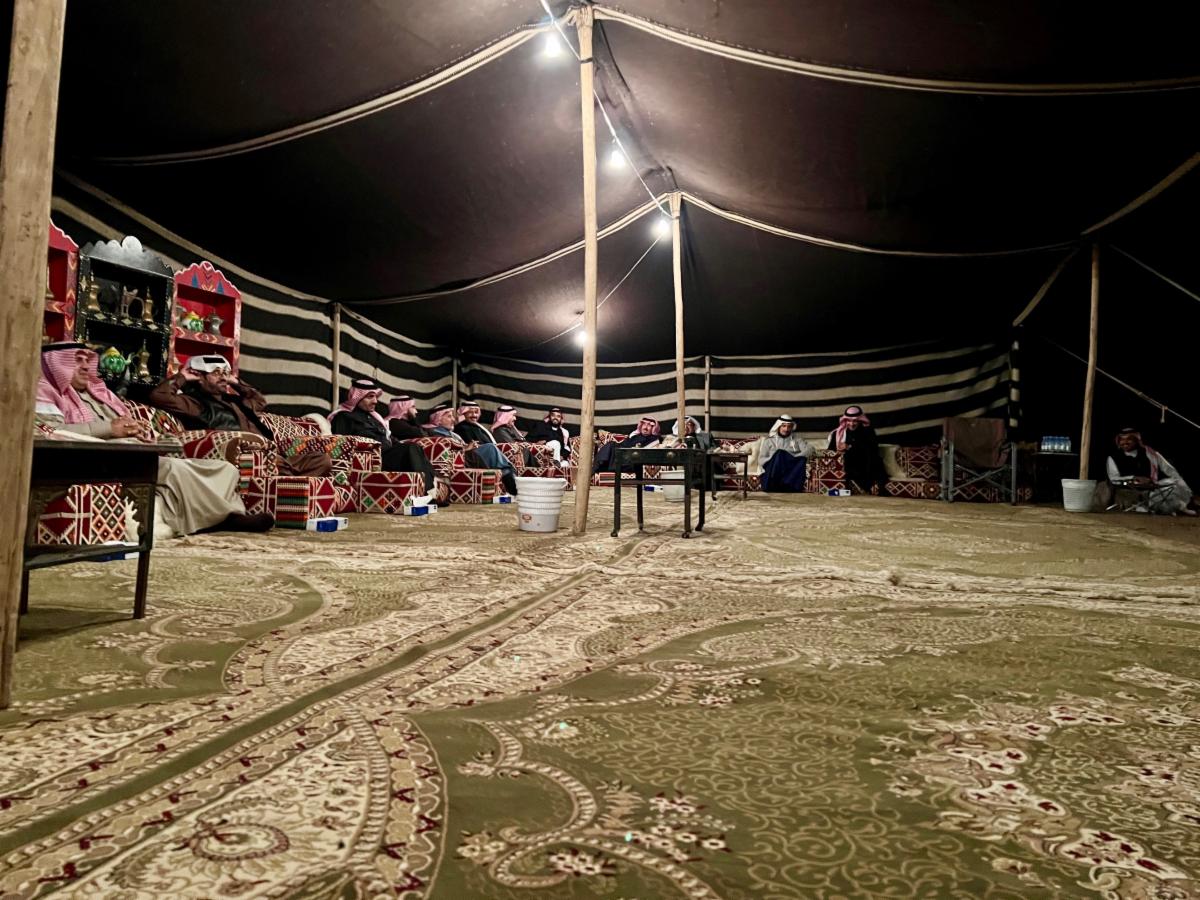
Our seats were draped in sheepskins. The design of the seating was a traditional sturdy red triangular pattern. The tent was lined in black goat hair. Rugs covered the sand. The tent was warmed by tables holding long-burning smokeless tube-shaped charcoal. A hard-black suitcase containing wireless radio communication equipment, office supplies, and personal items was set by the corner seat.
A call to prayer. The rhythm of standing and kneeling and bowing was slow, methodical and peaceful. The men returned to their seats. The professor sat next to me. While waiting, we chatted.
Without fanfare, the Prince arrived. With his shoes left outside the tent and his white bisht billowing behind him, he took the corner seat.
One by one he greeted his deputies. He turned and welcomed me in perfect English. Soon after, we made our way to a smaller tent for dinner. I introduced myself to the man seated next to me. He wore a grey zip-up hoodie over his thobe. I asked where he was from. Khobar. Small world! The K-12 school he had attended, Dhahran Ahiliyya School, is a school I have visited and greatly admire. Serving at the Asir Development Authority, he has a BA from Princeton and an MBA from Harvard Business School.
After dinner we returned to the larger tent. As we left, I saw men clearing and cleaning the table. Then the men who had served us, assistants and all the drivers, sat down to the same meal.
Back in the large tent, the Prince asked many questions in Arabic. Each man spoke. The Prince asked me what I thought could help Abha. I thought about the small amount of litter that was strewn about in some public places. I was struck by the contrast between Abha and Madain Saleh, the Saudi sister city of Petra in Jordan. During my last visit there in 2016, Madain Saleh had a litter issue but I didn’t see any litter at all when I visited this year. I said, “Forgive me, your Highness, I think it would be helpful to address the litter issue of Abha.” The young man seated next to me whispered, “I just said that in Arabic.” I would later learn that the young man was the Prince’s new son-in-law.
Professor Rahmah and I walked out to our cars together. She reached into her purse and presented me with a bottle of perfume. “To remember me.” She had bought it that day for herself. Always offerings of kindness. Heartfelt custom.
The next day I was invited to meet the Prince and his family at his forest camp. I couldn’t see any security. We ate rice with chicken and organic arugula from a local farm. We spoke of our families. Heritage.
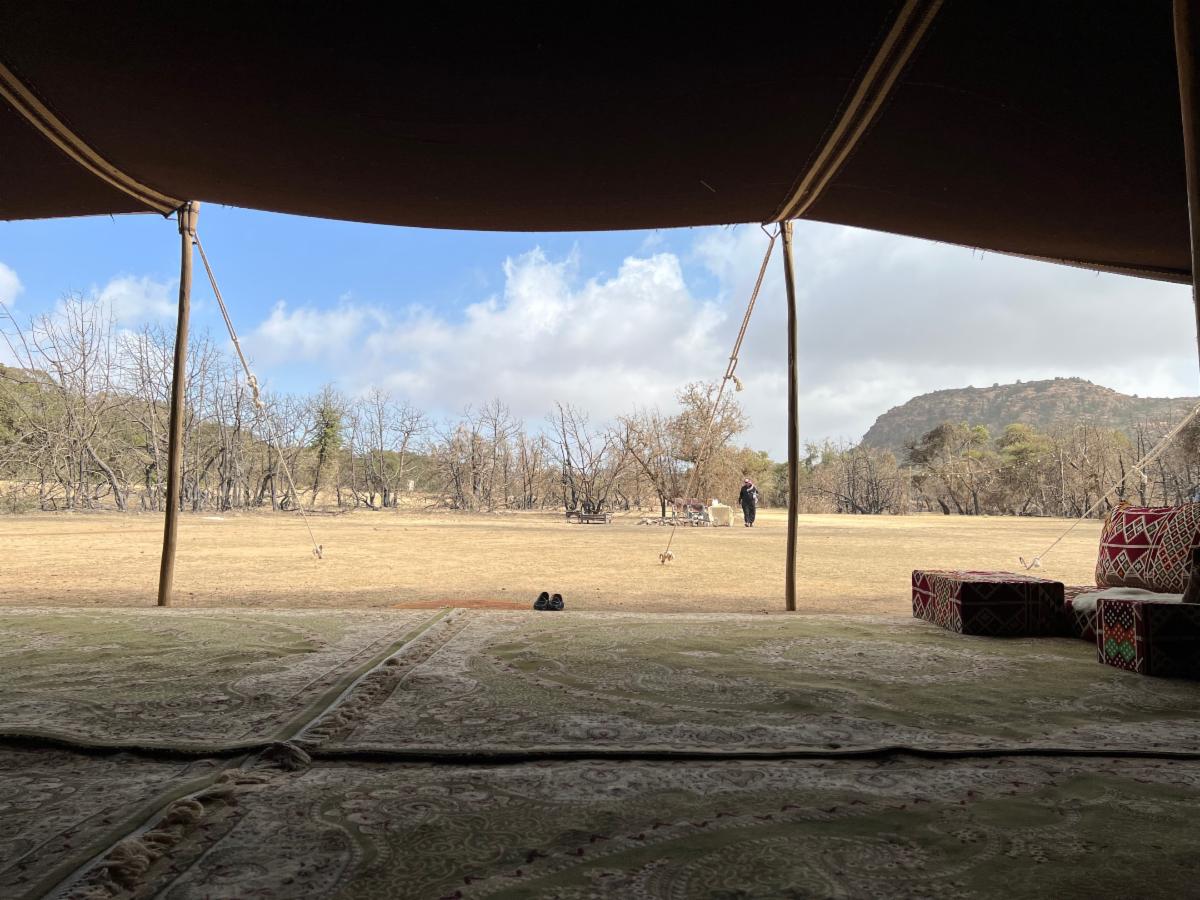
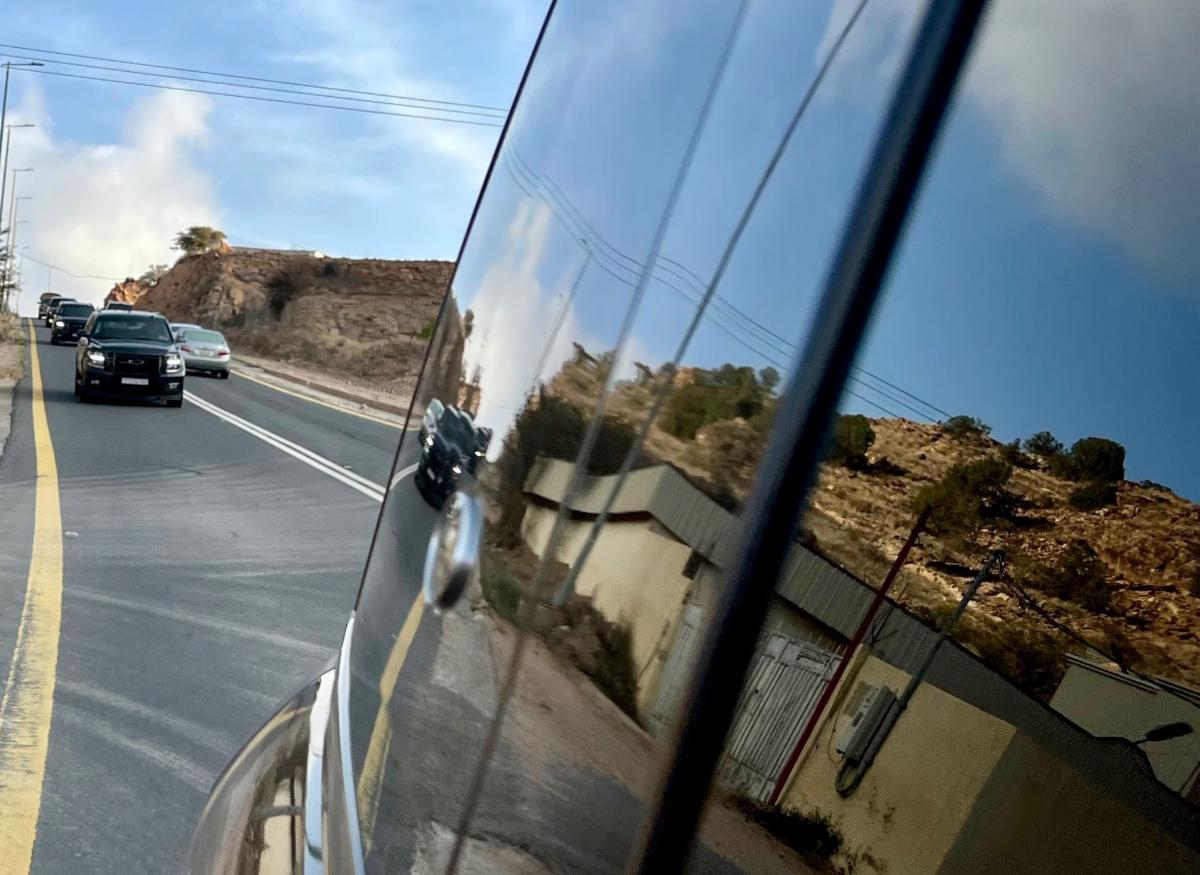
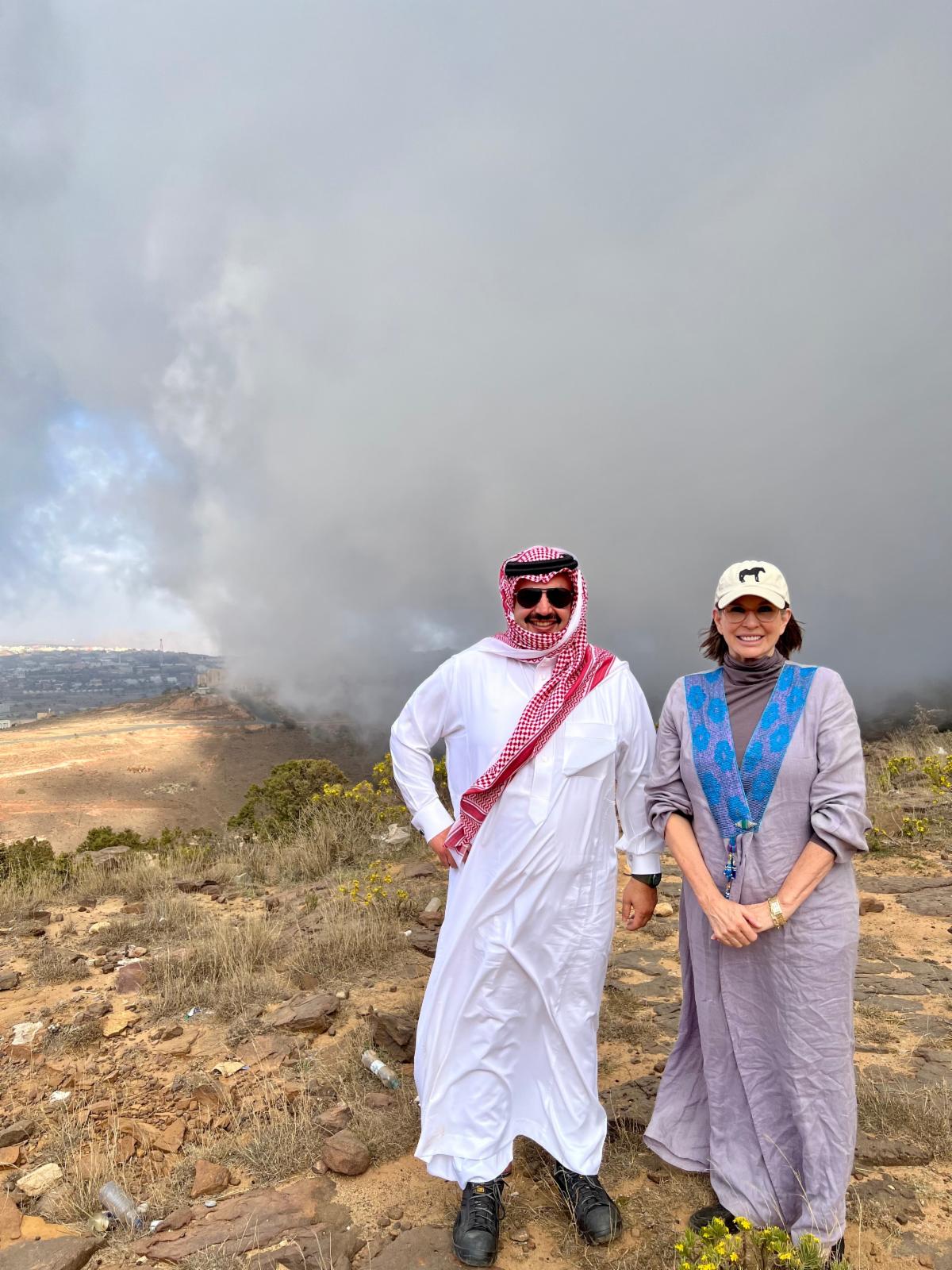
Prince Turki Bin Talal Al Saud:: Father of five. Political Science graduate from King Saud University. American-trained fighter pilot. Educated at the Royal Military Academy Sandhurst in the United Kingdom. A Brigadier General in the Royal Saudi Air Force. Governor of the Asir Region. Grandson of King Abdul Aziz Al Saud, also known as “Ibn Saud,” the founder of the modern Kingdom of Saudi Arabia. Nephew to King Salman Bin Abdul Aziz Al Saud. Cousin to Crown Prince Mohammed Bin Salman Bin Abdul Aziz Al Saud.
As we curled around ancient back roads, the Prince would stop and talk with people. Most knew him. He introduced himself – simply, as Turki Bin Talal – without pretense. “How are you?” he asked. “Is there anything I can do for you? Is there anything I can help you with?” They approached the side window without hesitation.
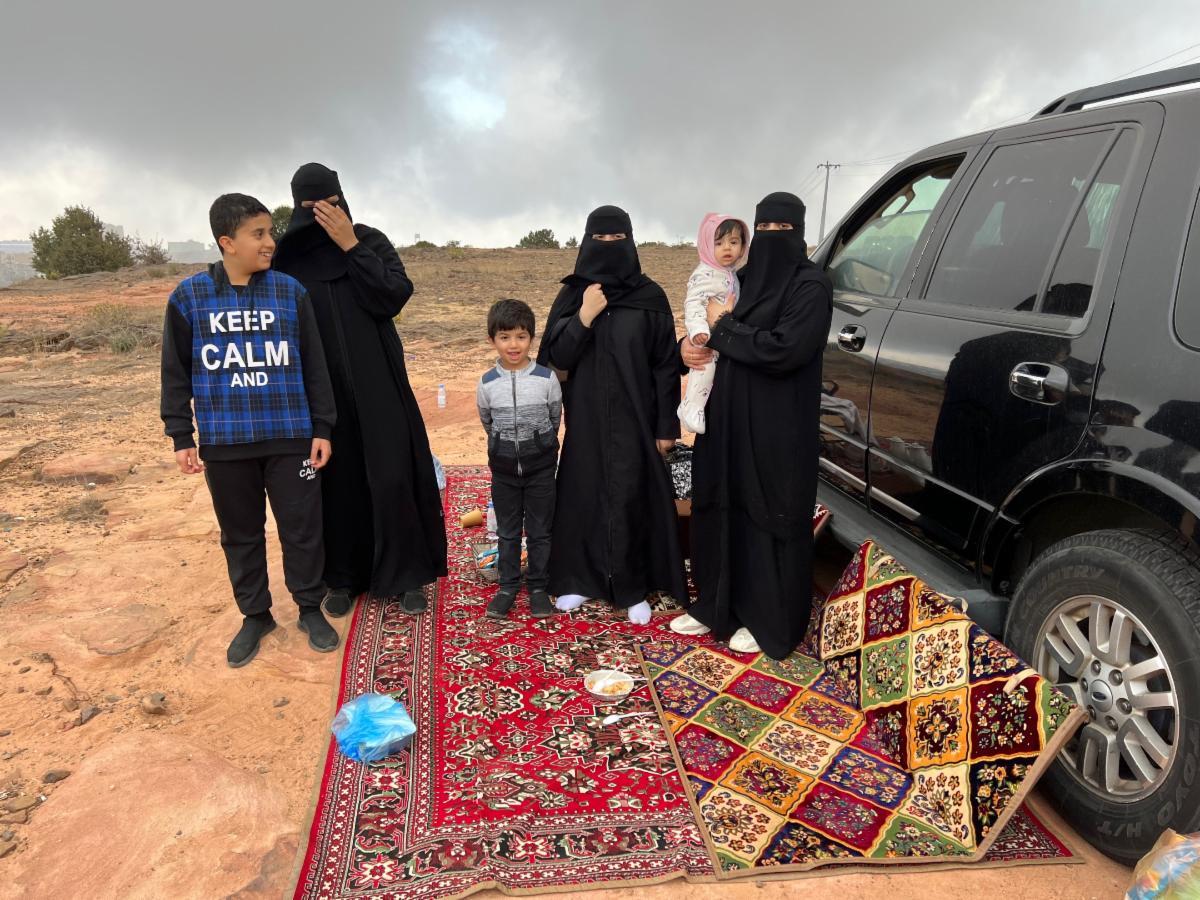
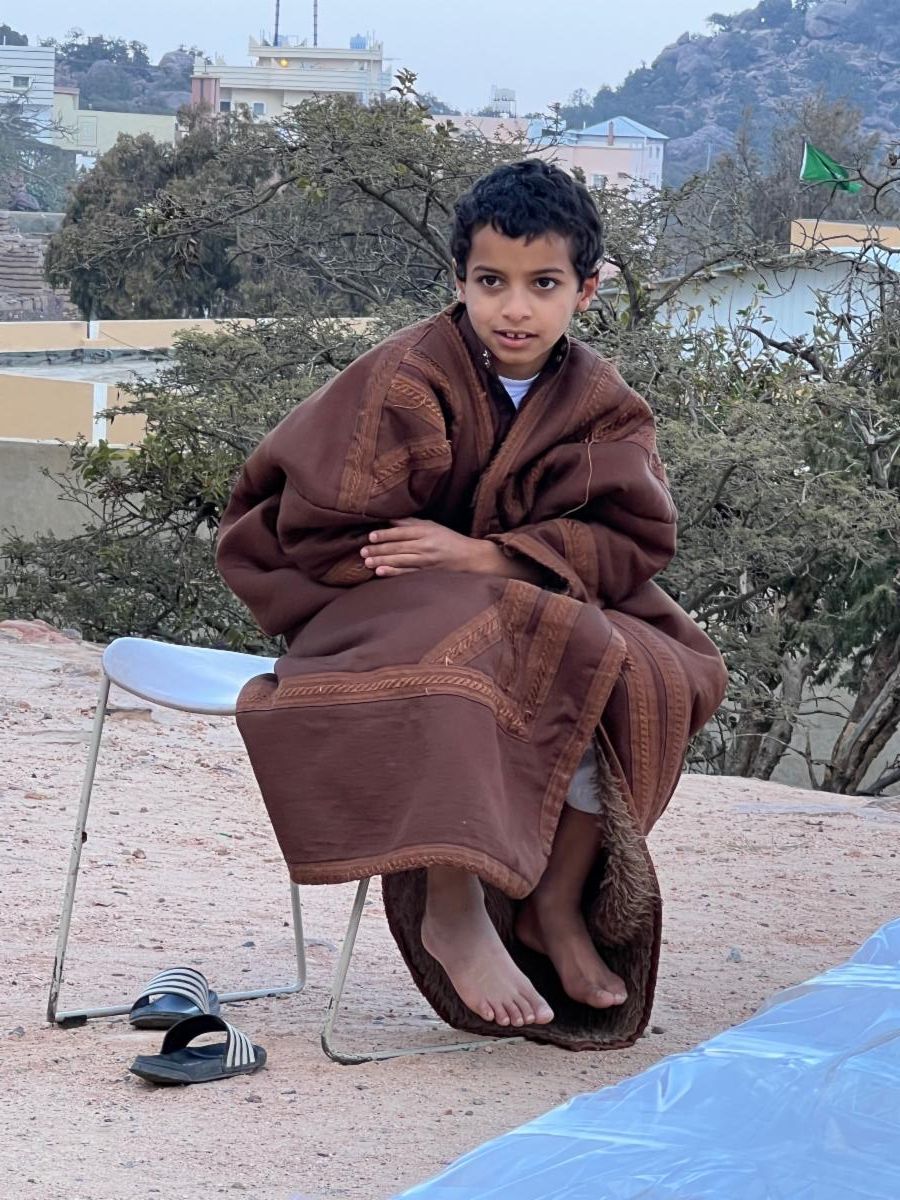
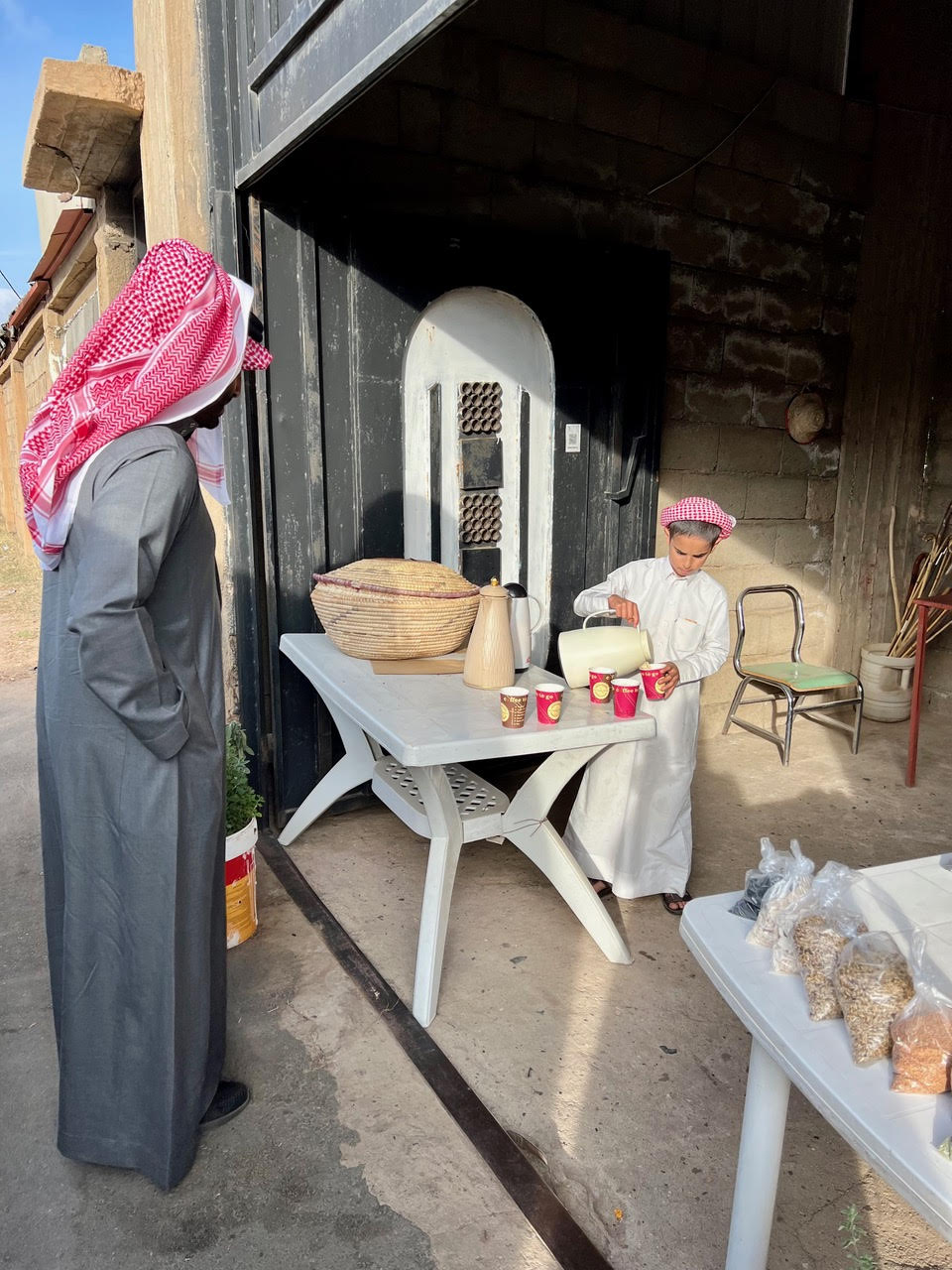
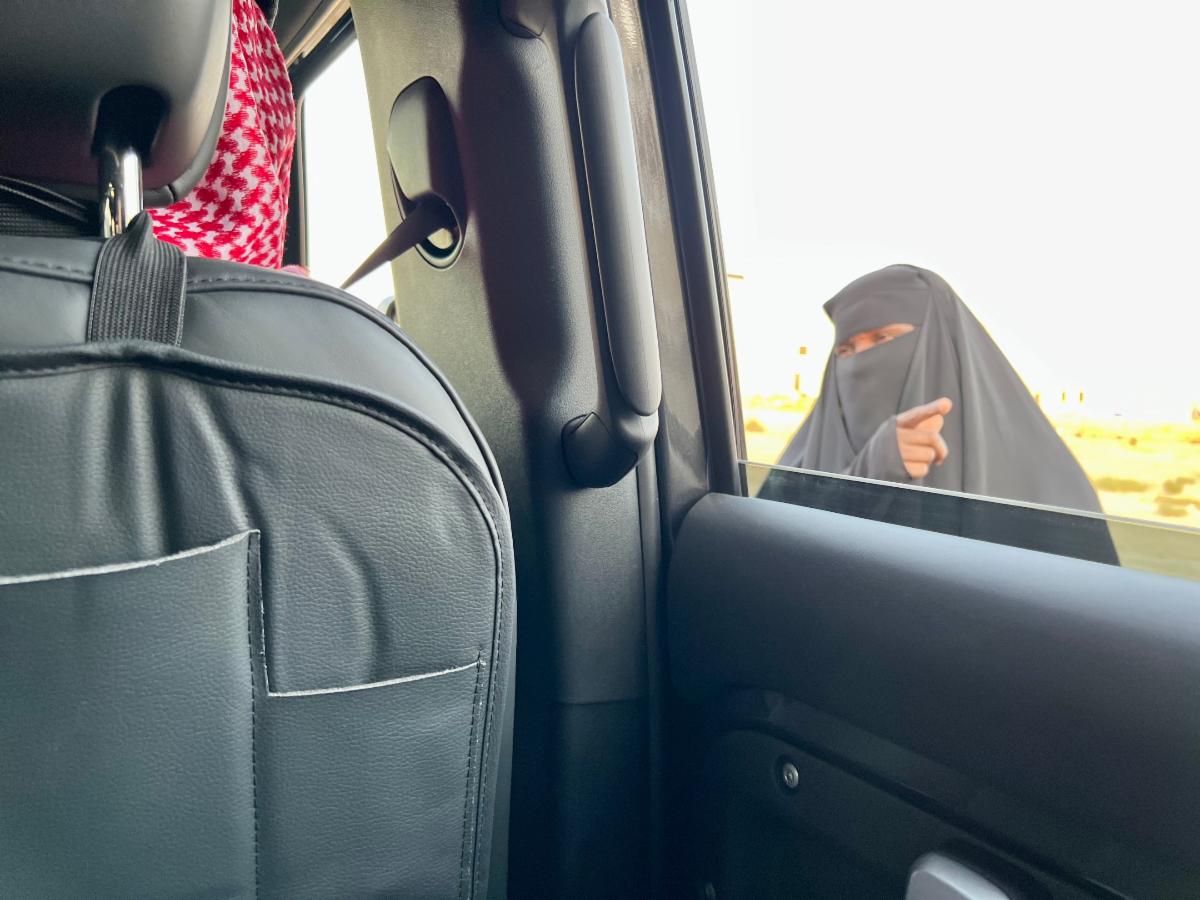
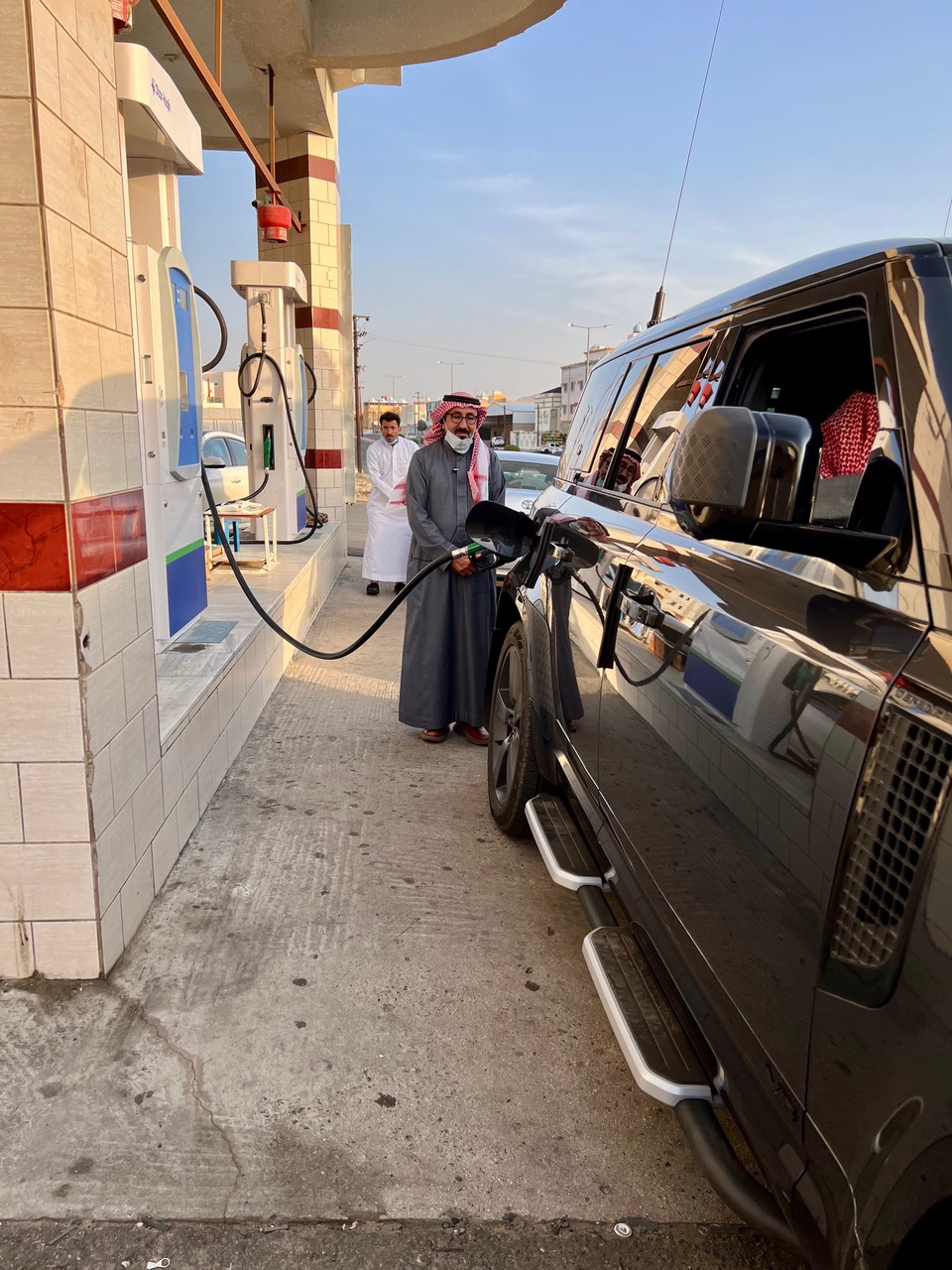
Back on the streets of Ahad Rufaida, a village near Abha, we spoke with more citizens.
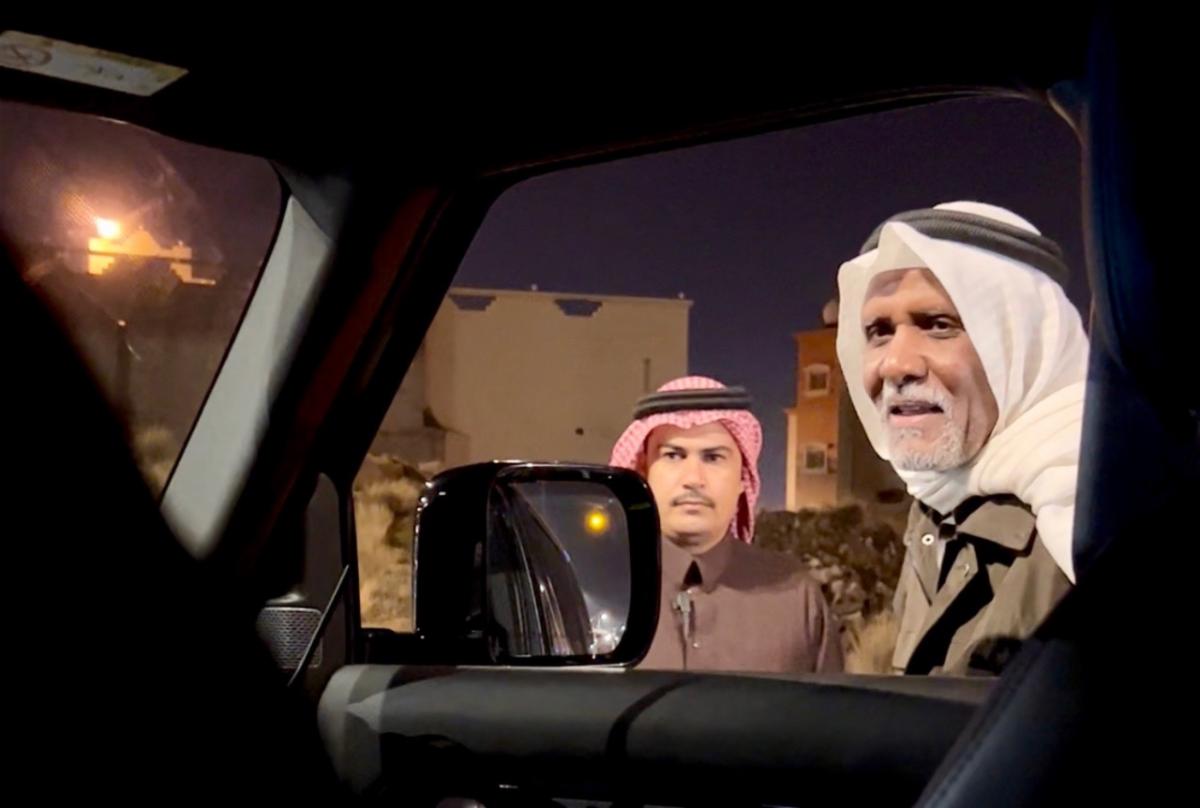
Long after the sunset, we made our way back to the camp. It was cold. I covered myself with sheepskin. The Prince worked on his phone. His family gathered around him.
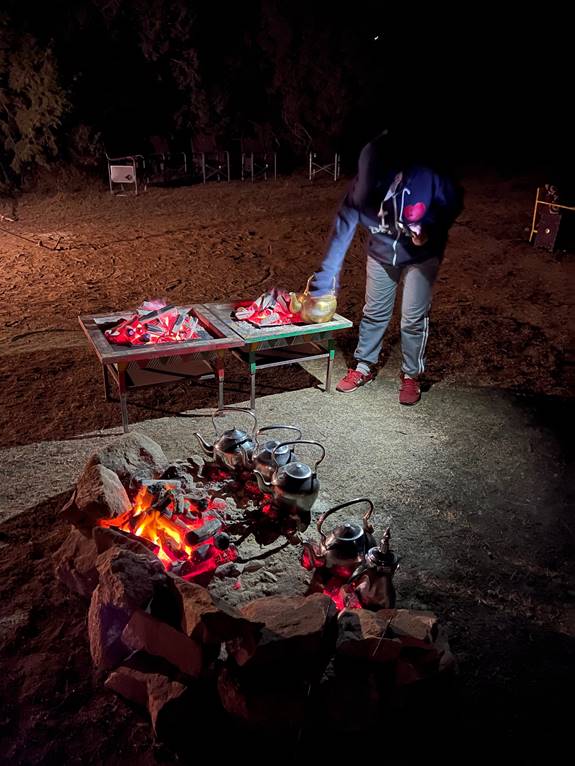
Tables of hot charcoal were brought in to warm the tent. Tea was delivered and served.
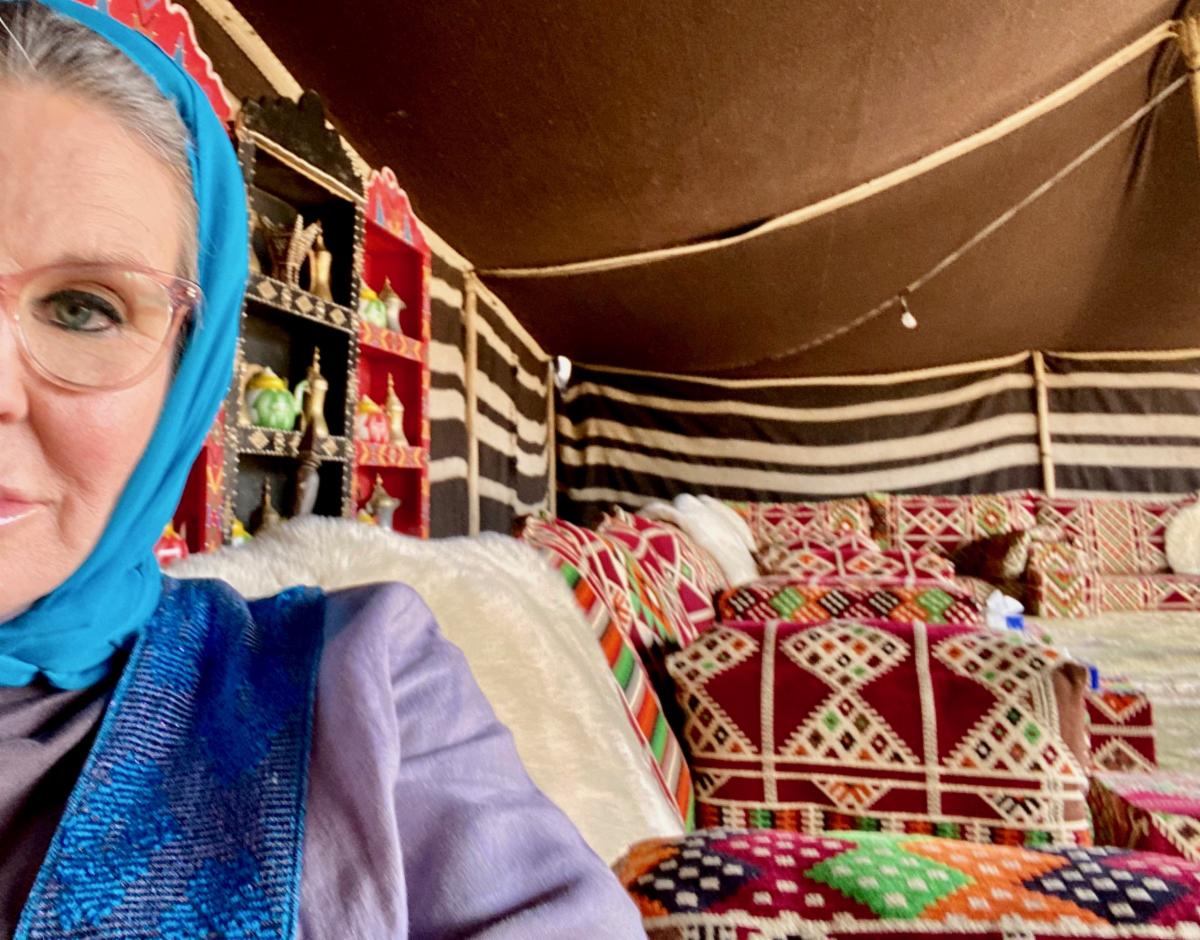
During the next several days, we drove around the region of Asir. I could have driven. Women are now allowed to drive in Saudi Arabia. I asked another driver how long she had been driving. “Thirty years! Only two of them legally!” she winked with a smile and slyly sped off.
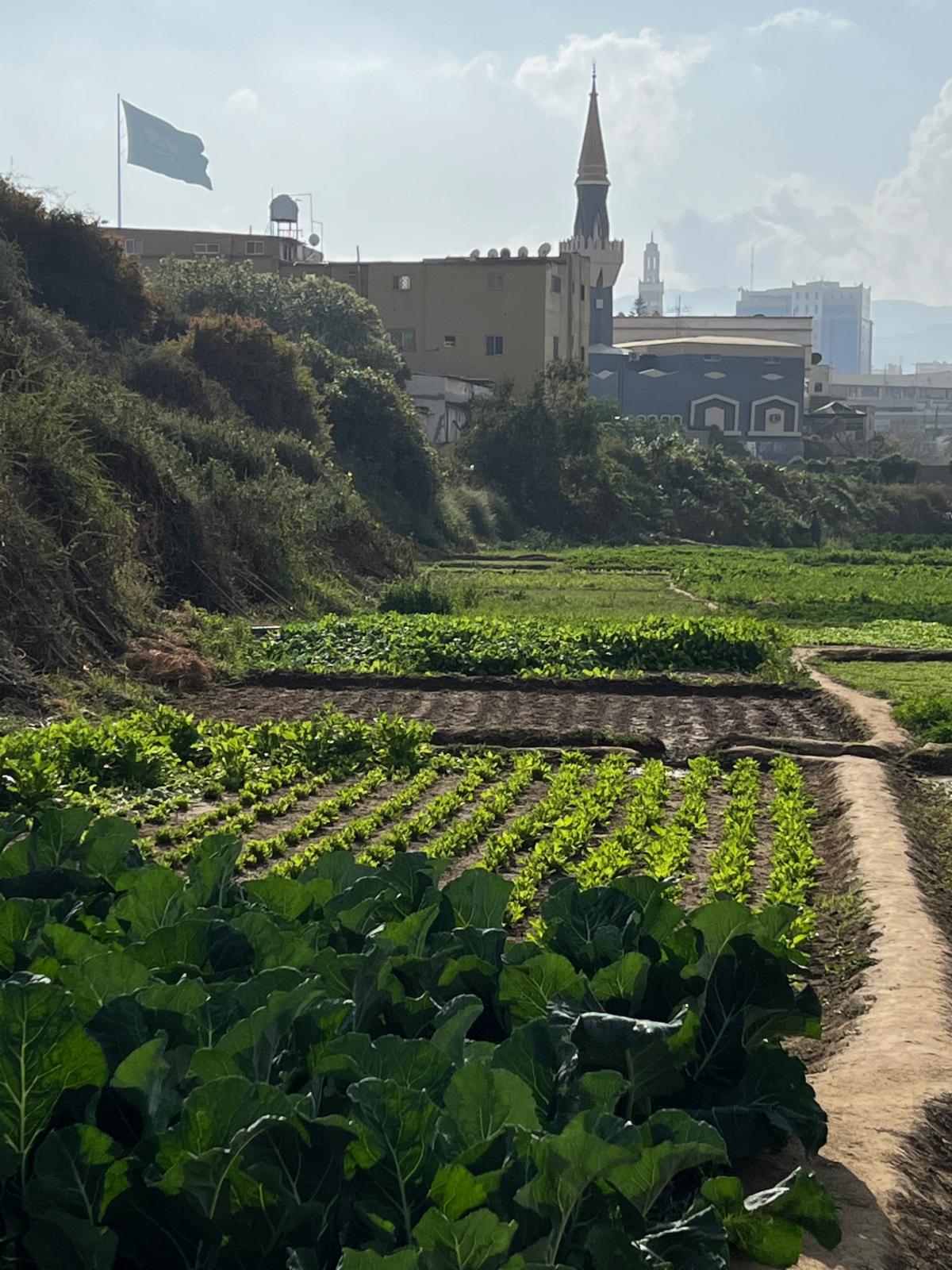
The pathways through the gardens in the middle of downtown Abha. Well organized and beautifully maintained by what appeared to be several gardeners. Some of the harvest from this riverbed ended up in the Tuesday Market, an open-air souk.
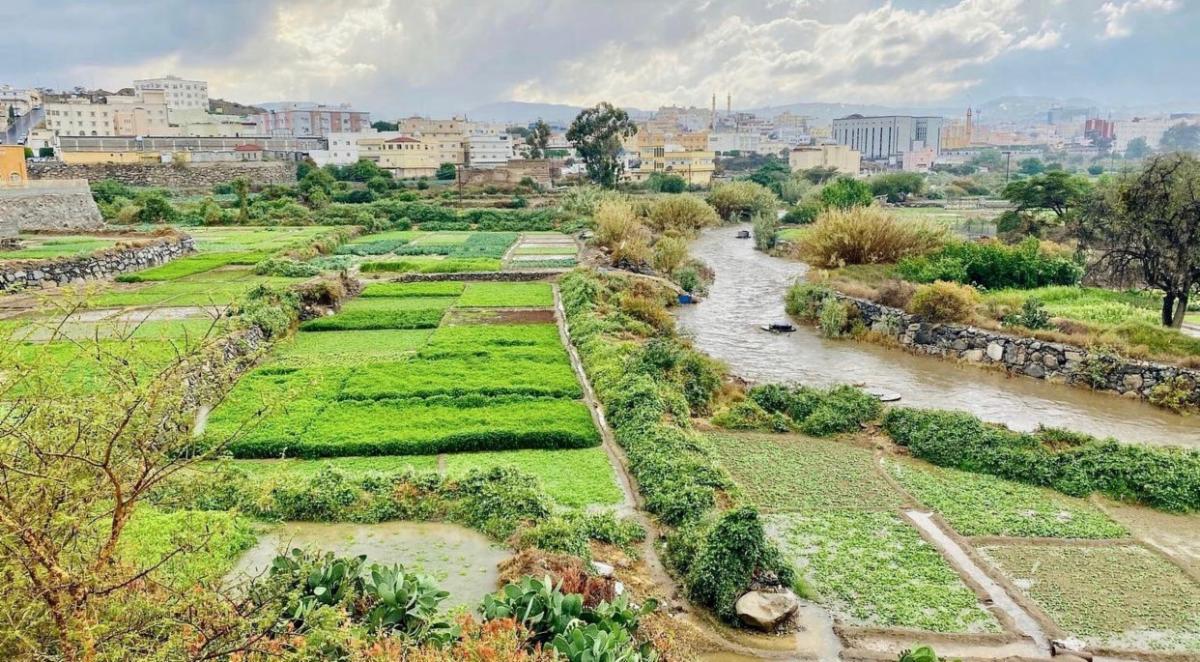
Artichokes, watermelon, rice, pomegrante, oranges, lemons, limes, figs, dates, spinach and eggplants, olive and date palms are some of the many crops Arabs introduced to the West. Some ancient Arab methods of irrigation are still used, as are some of the wells and aqueducts built long ago.
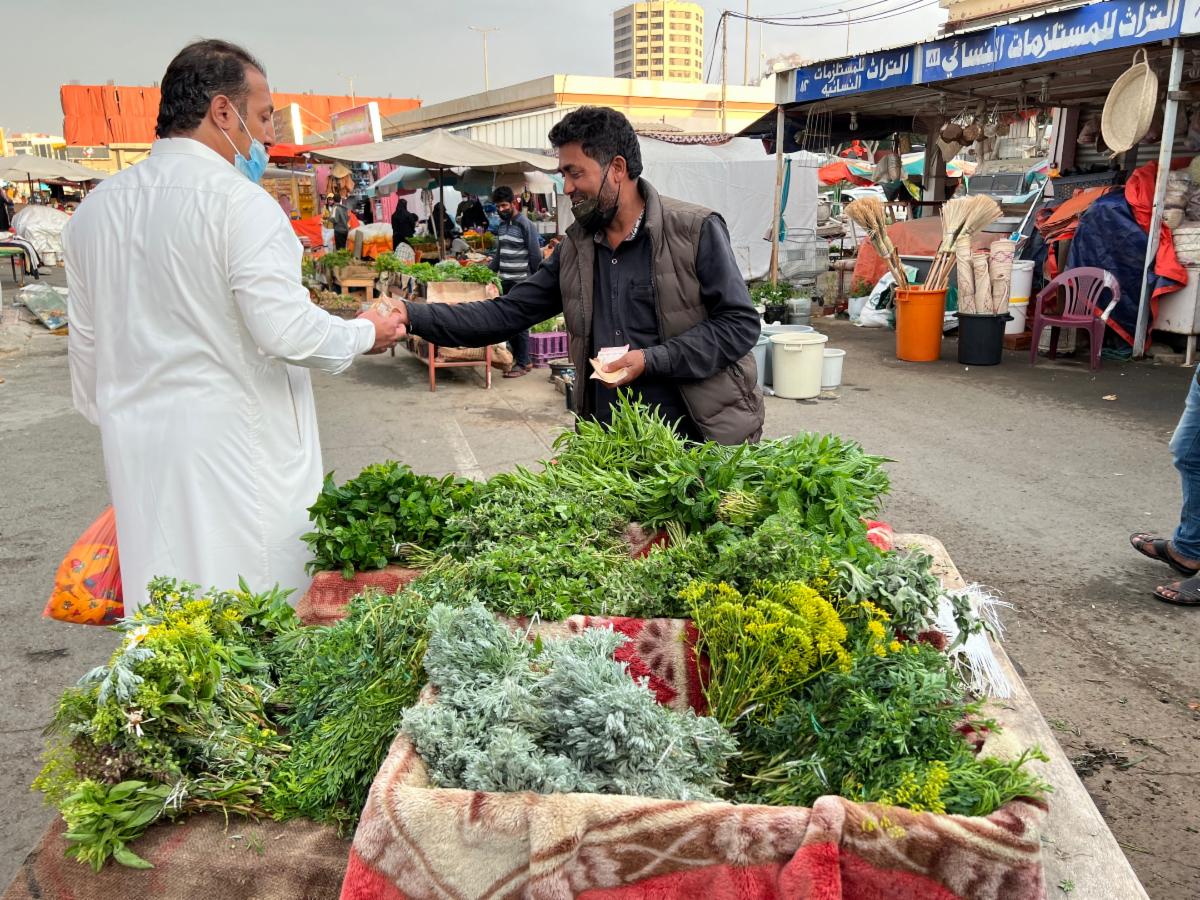
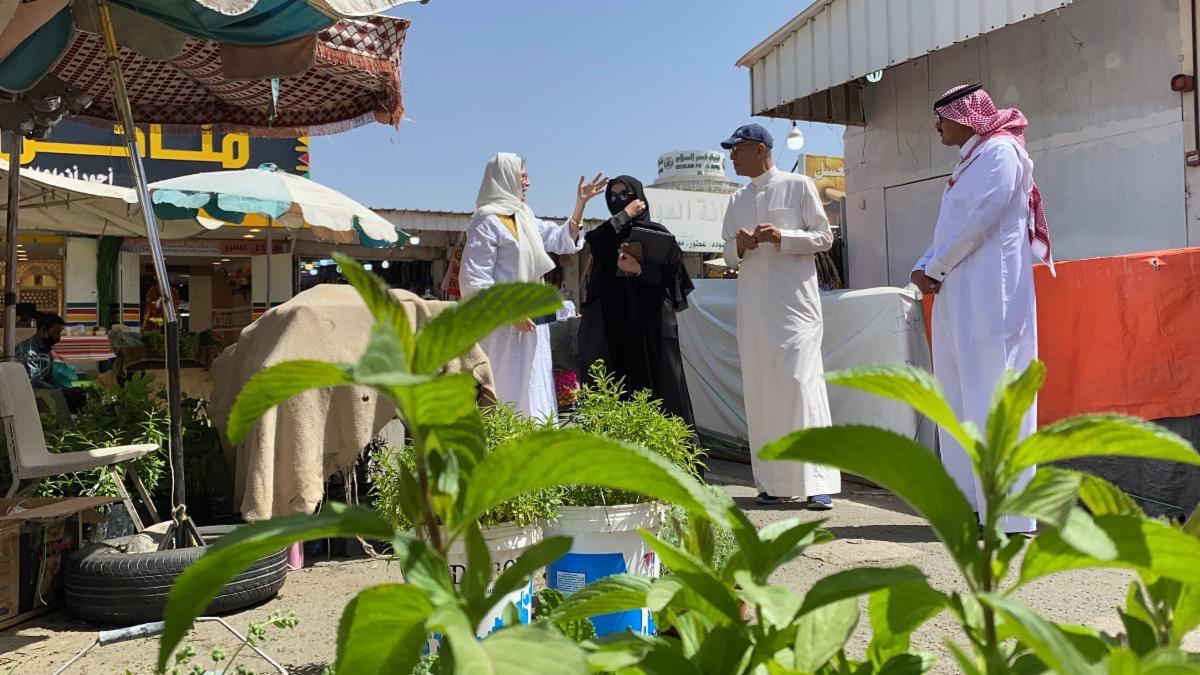
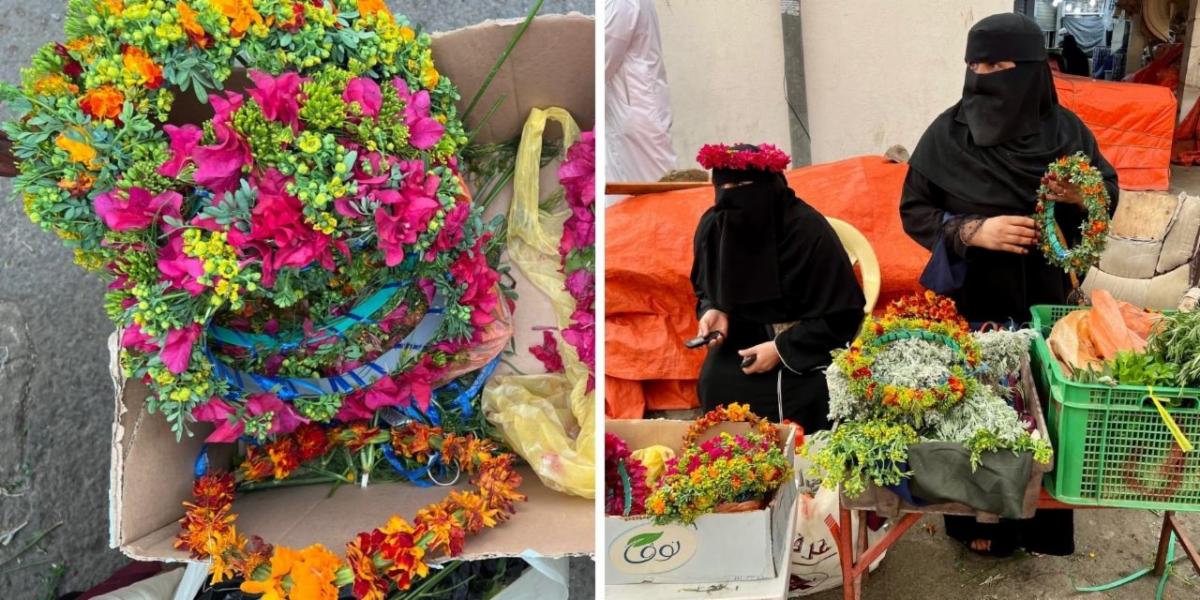
The Flowerman Festival celebrates the ancient tradition of wearing garlands. Flowermen crown their heads with flowers and herbs. Many women create and sell the flower crowns in the streets and souks.
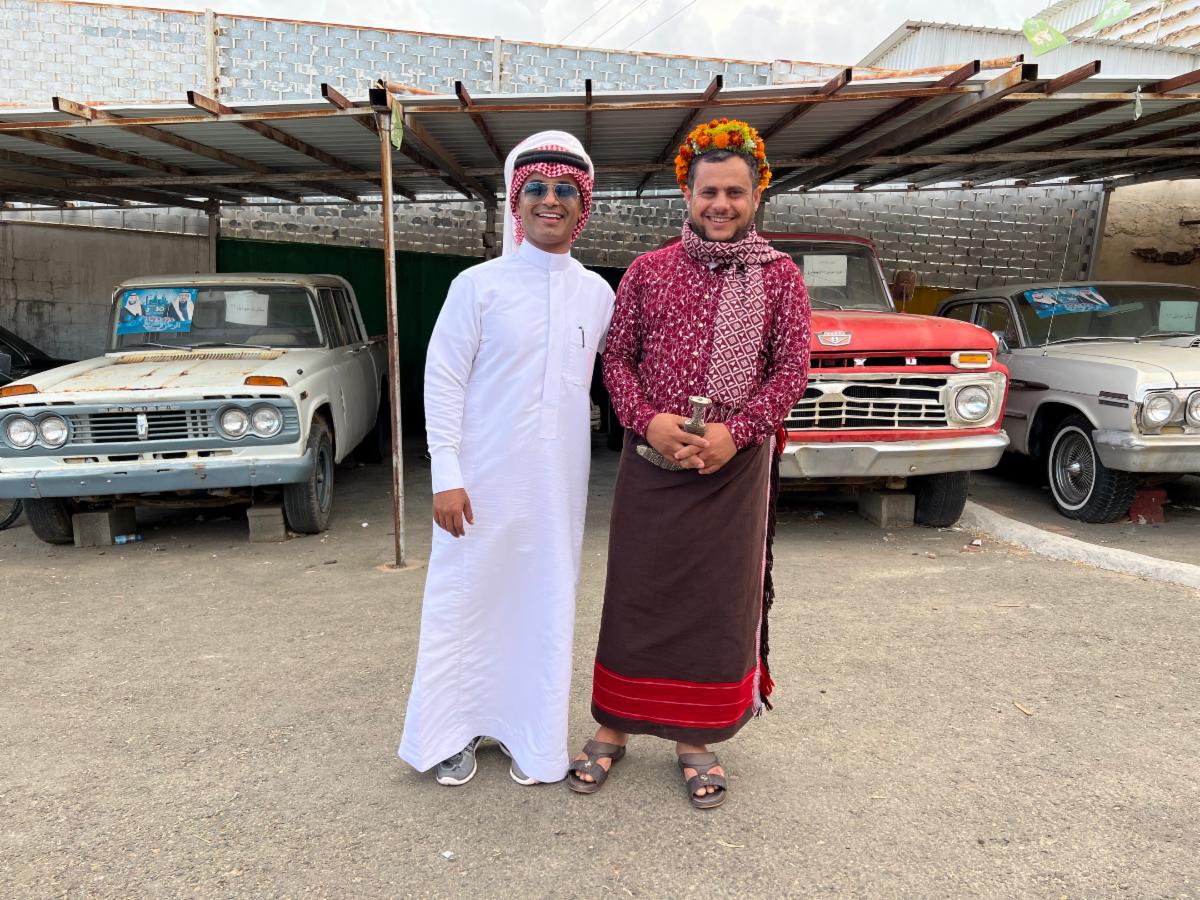
Dr. Mohammed Al Malki shows us modern Saudi Arabian attire thobe, ghutra, and algal (robe, headdress, and cord) alongside his friend in Flowerman attire. These garlands are made of a combination of herbs, wild basil, grass, flora, marigold, and jasmine. The headpieces are worn for the sake of beauty and health. Behind these men are vintage American cars displayed in rural private museums that are open to the public.
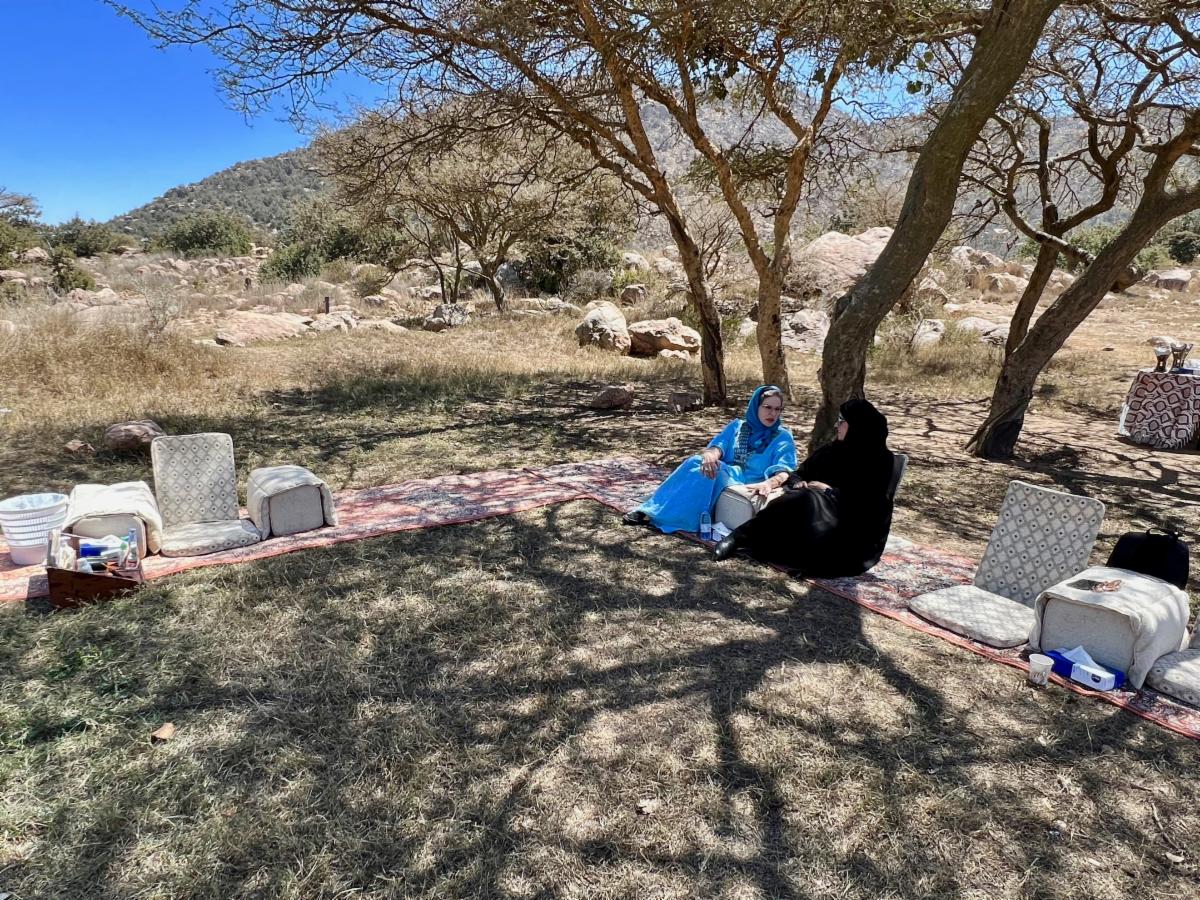
Lunch in Prince Sultan bin Adbulaziz Park with Abha native Dr. Raniah Al Mufarreh. Dr. Raniah is an Assistant Professor of Linguistics at King Khalid University. She received her Masters and PhD from the University of Florida in Gainesville. A large majority of the Saudi men and women with whom I met had degrees of higher education from schools outside of the Kingdom, providing them a broader perspective and worldview.
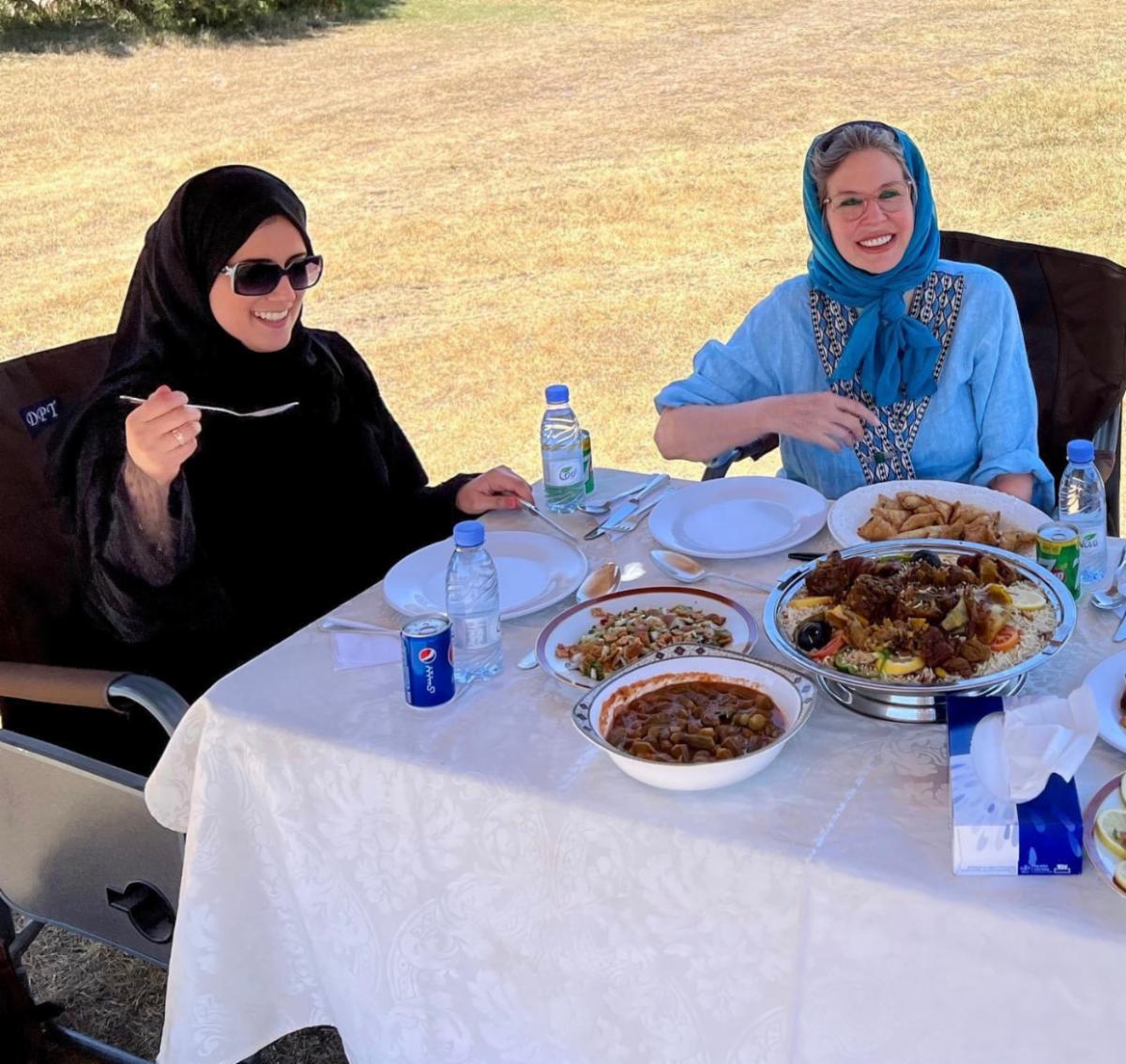
Many entrepreneurial women make and sell homemade food. We dined on kabsah, okra, edam, and sambosah.
It is not required to wear a scarf or abaya. Electing to cover my head out of respect, my choice was a ballcap. Anyone can wear whatever they want.
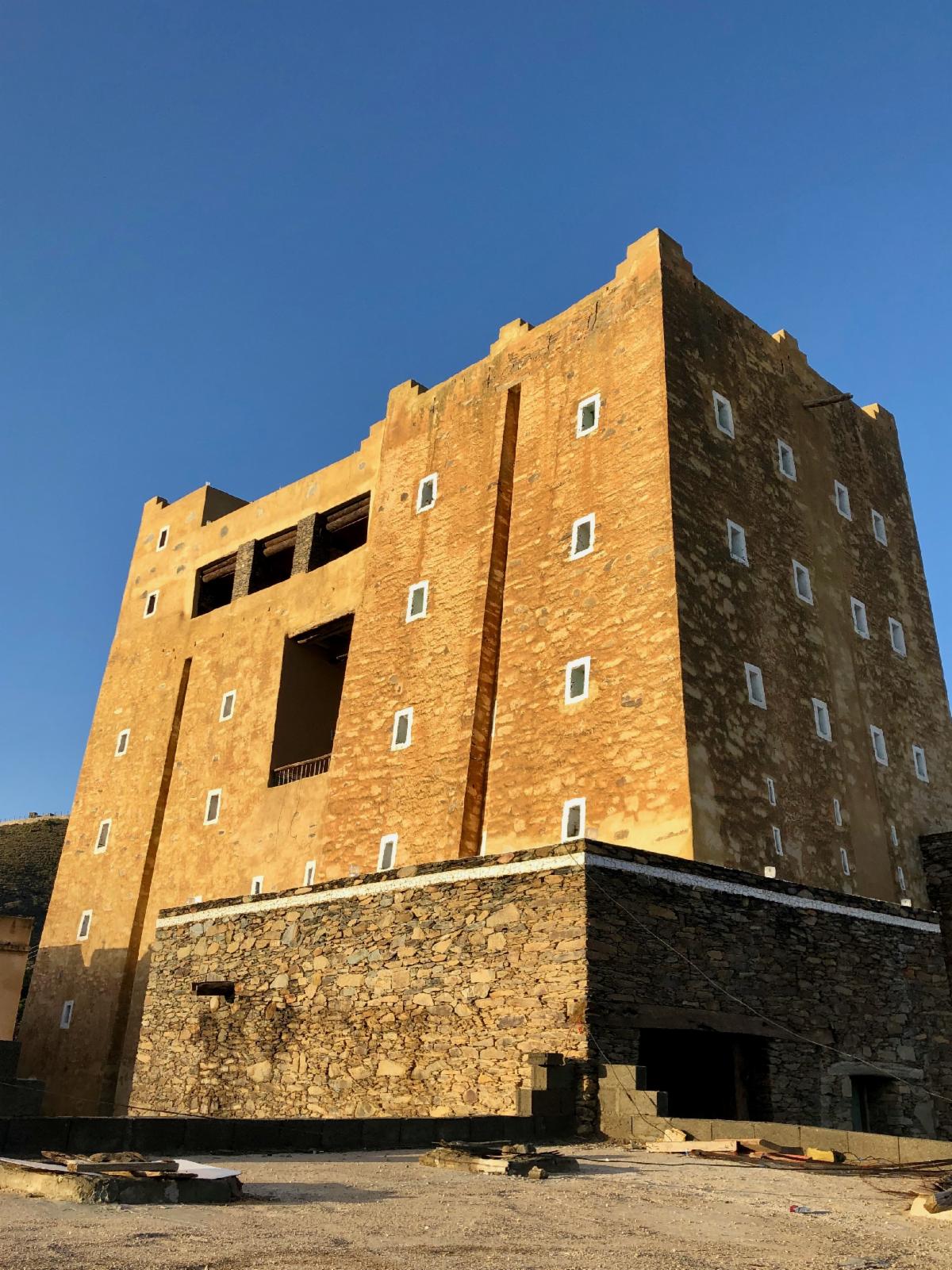
Abu Sarrah Palace is located in the middle of the Azizah Village in Asir. The traditional palace is nearly 220 years old.
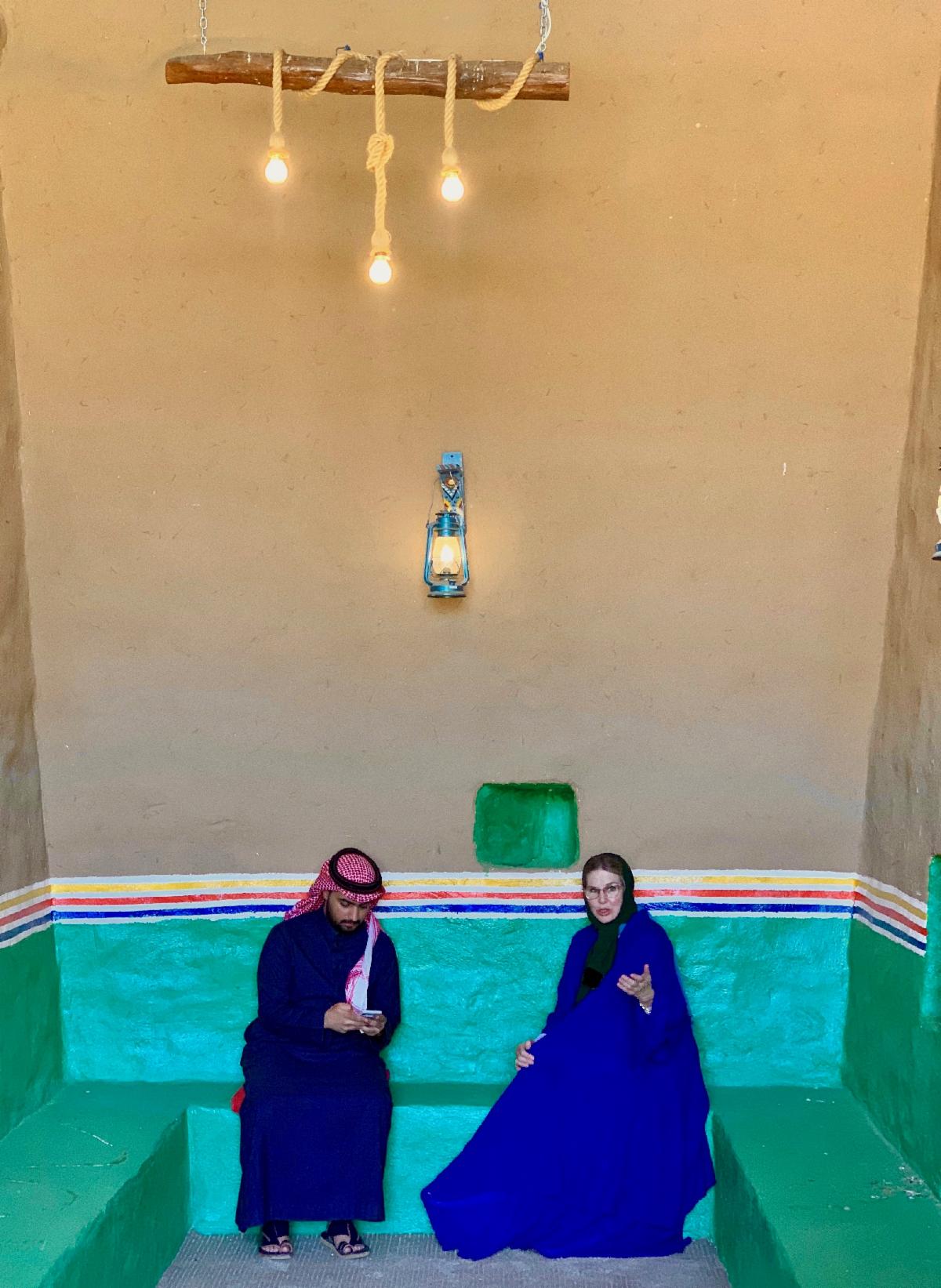
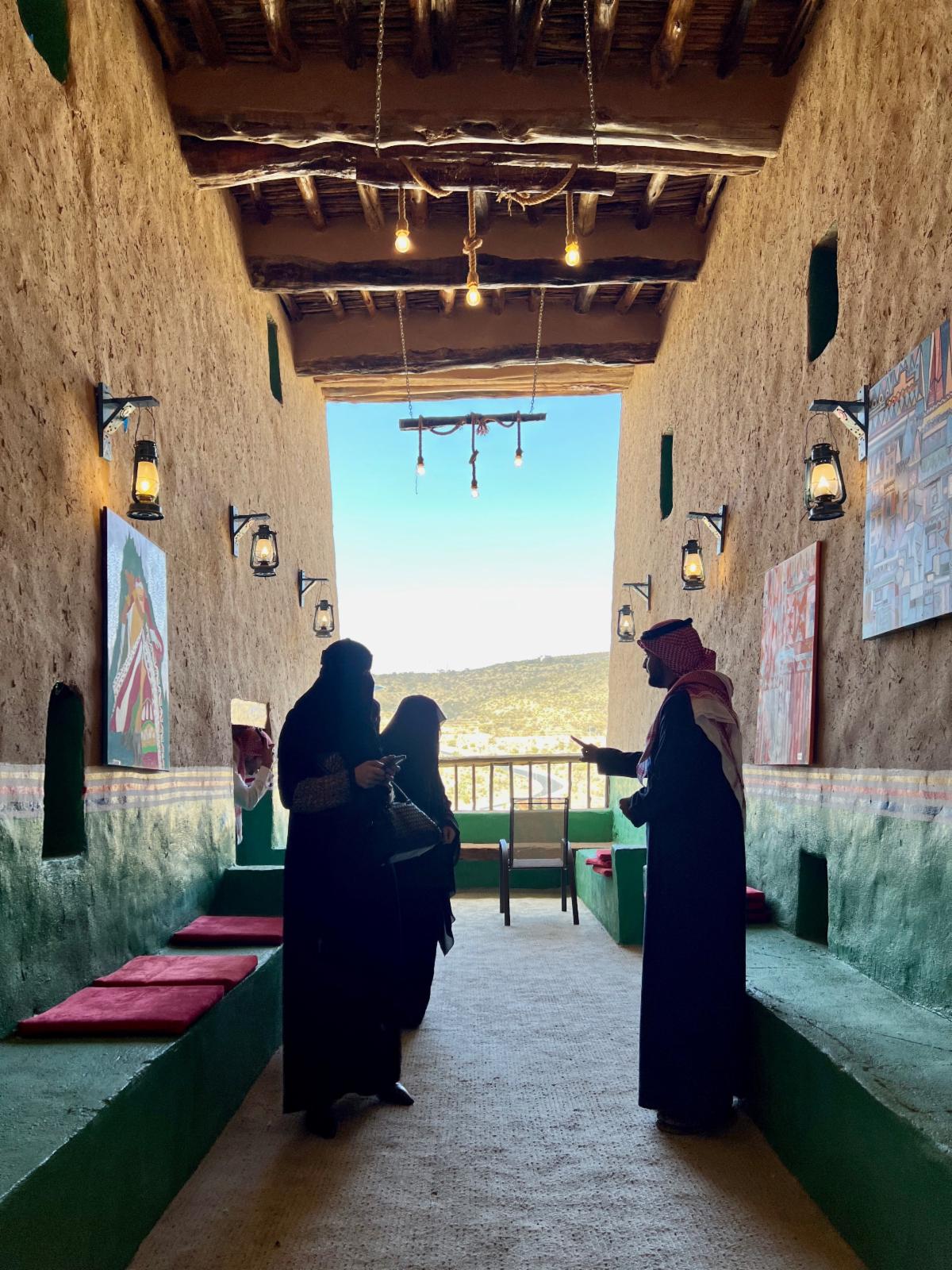
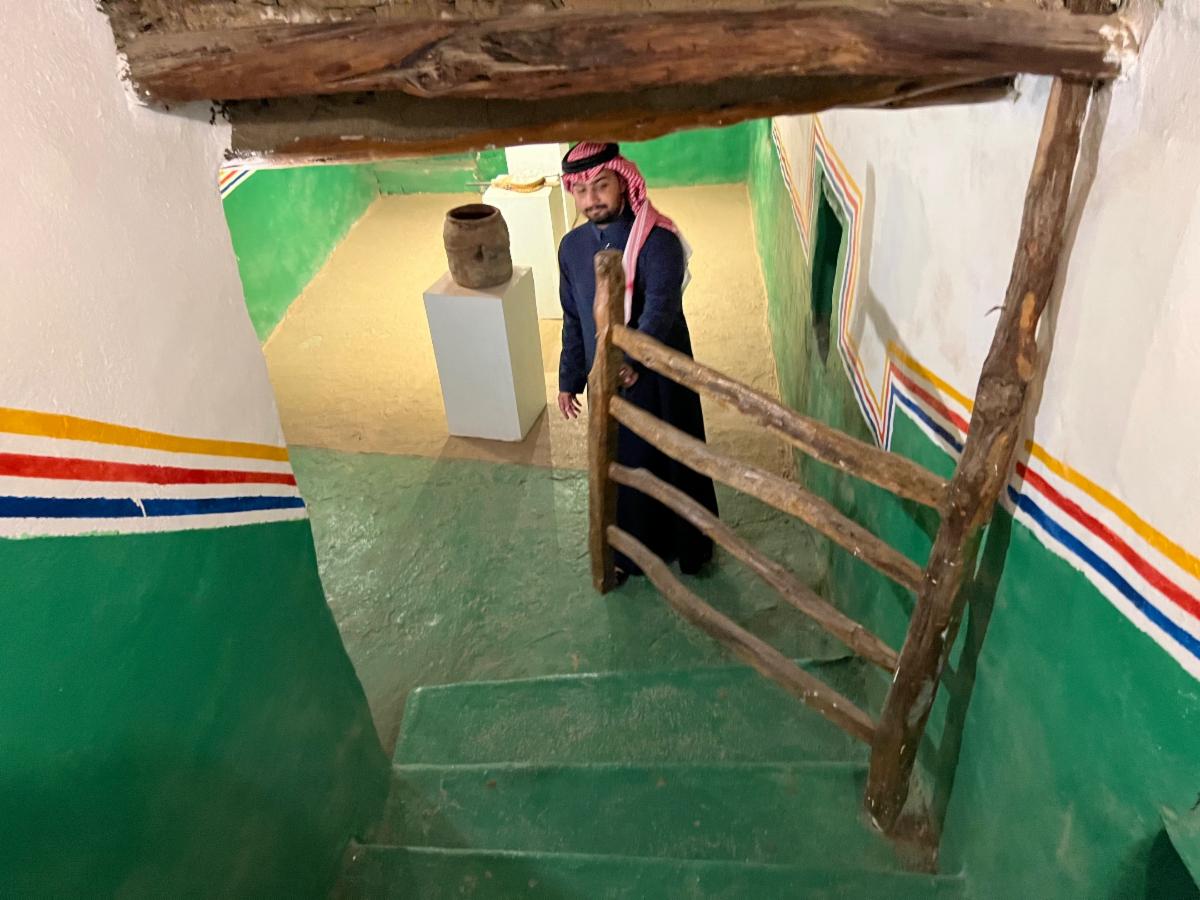

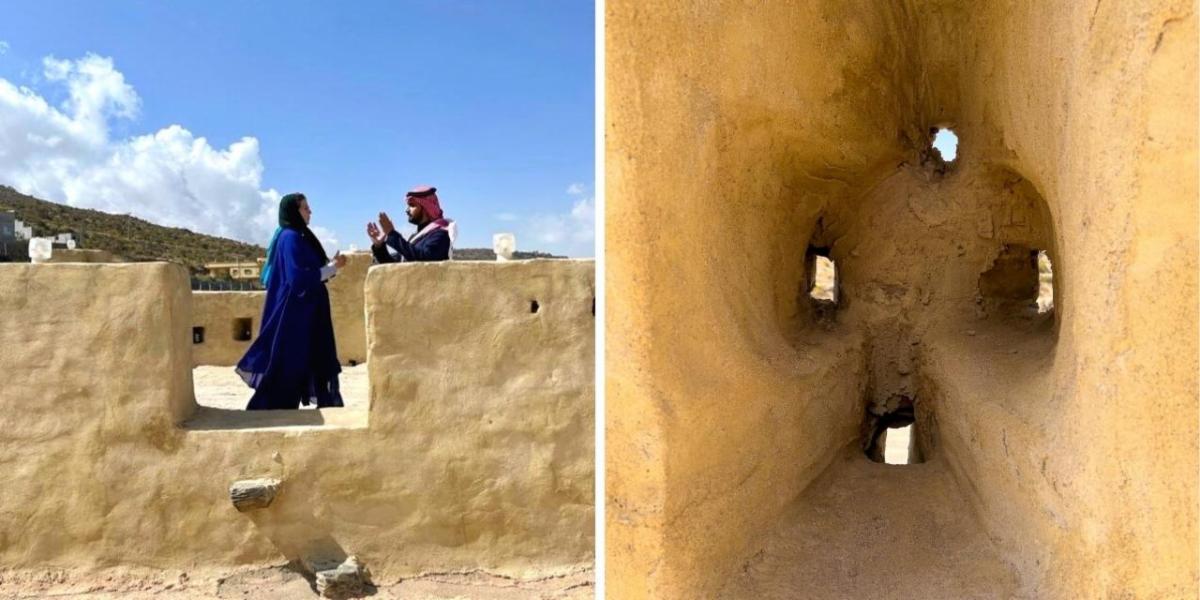
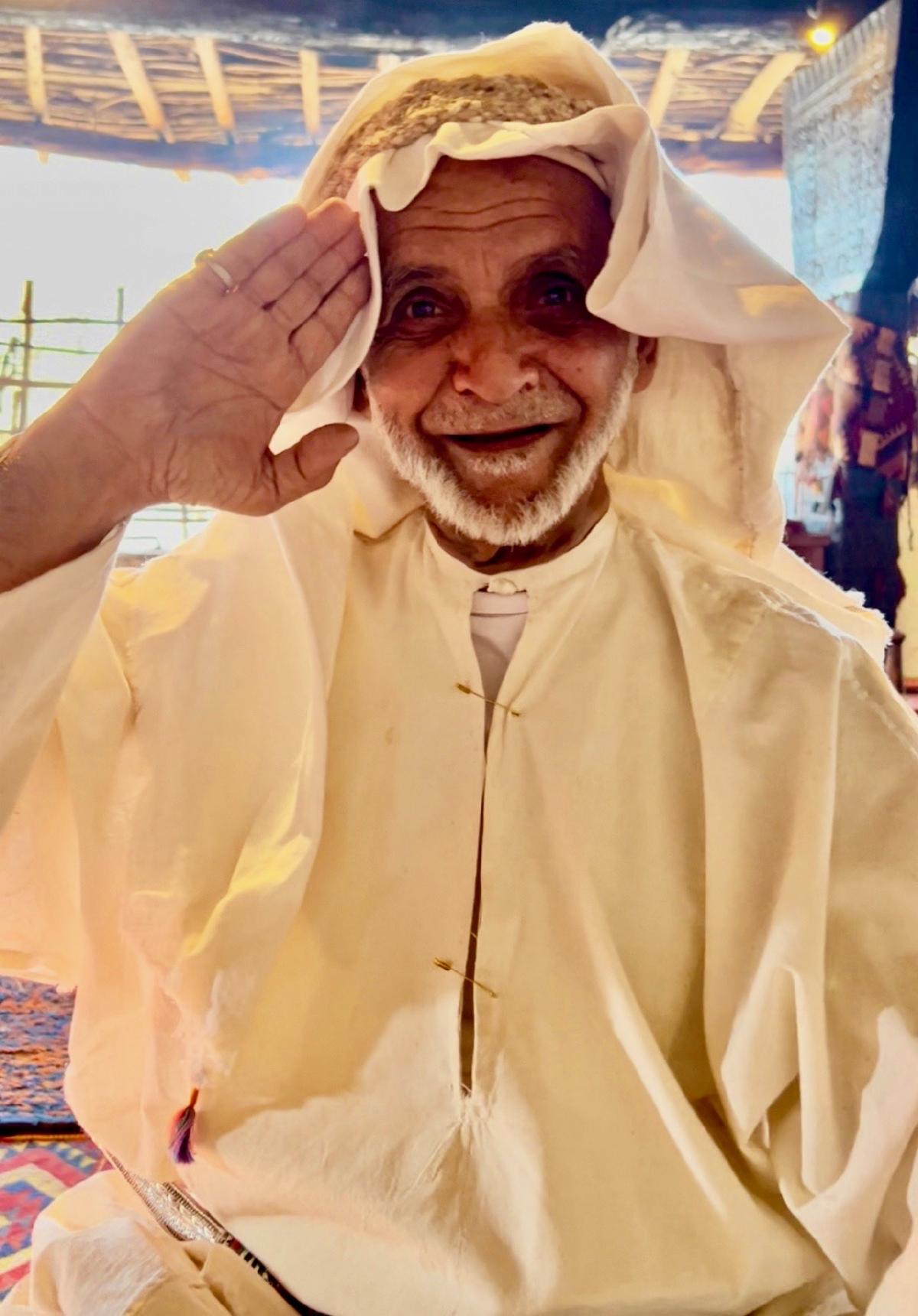
Am Dahdooh lives in the small village of Tanoomah. Am means uncle. He is called Am because he has been like an uncle to his entire village.
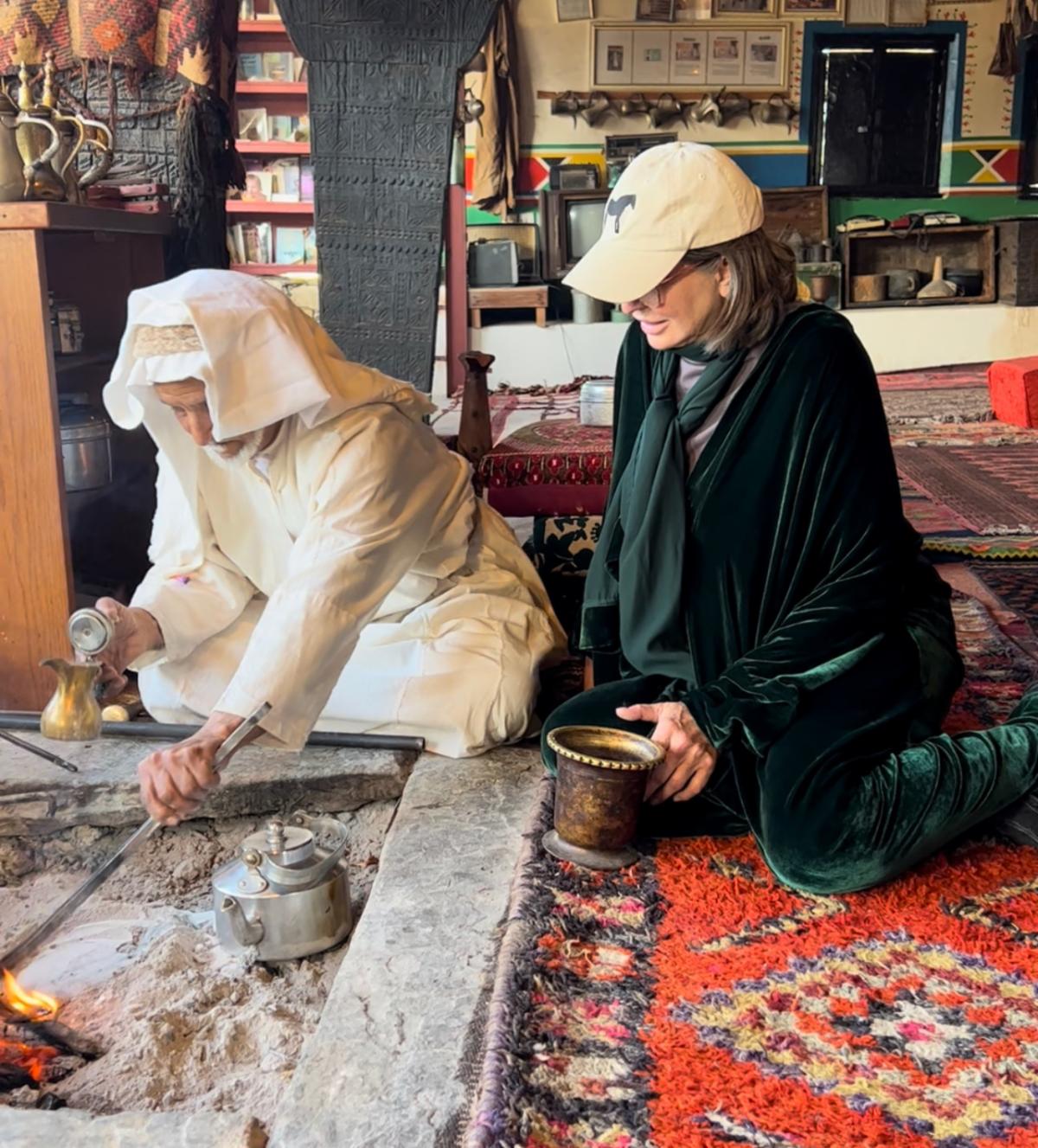
Am Dahdooh’s tent is covered with traditional carpets. The walls are decorated with al qatt. Many tents now have televisions broadcasting worldwide news programs.
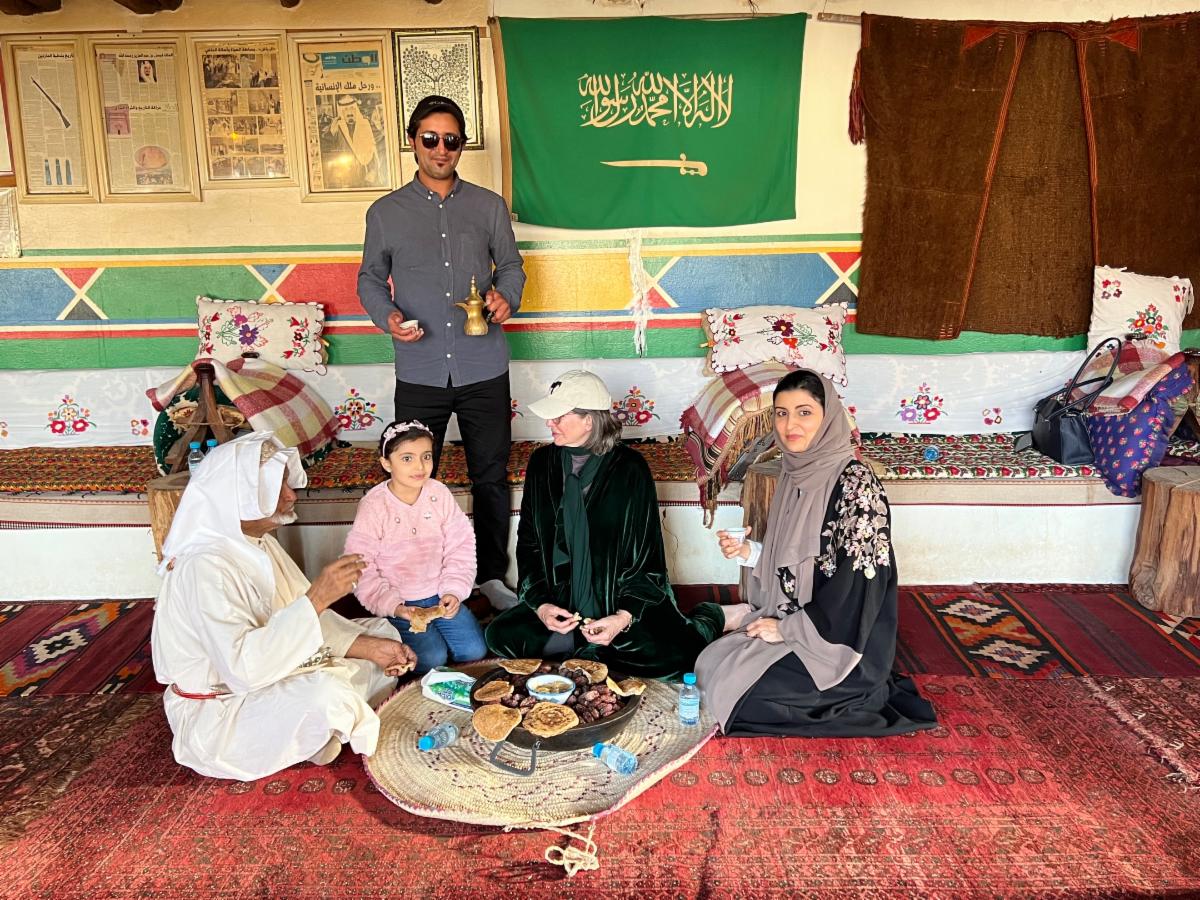
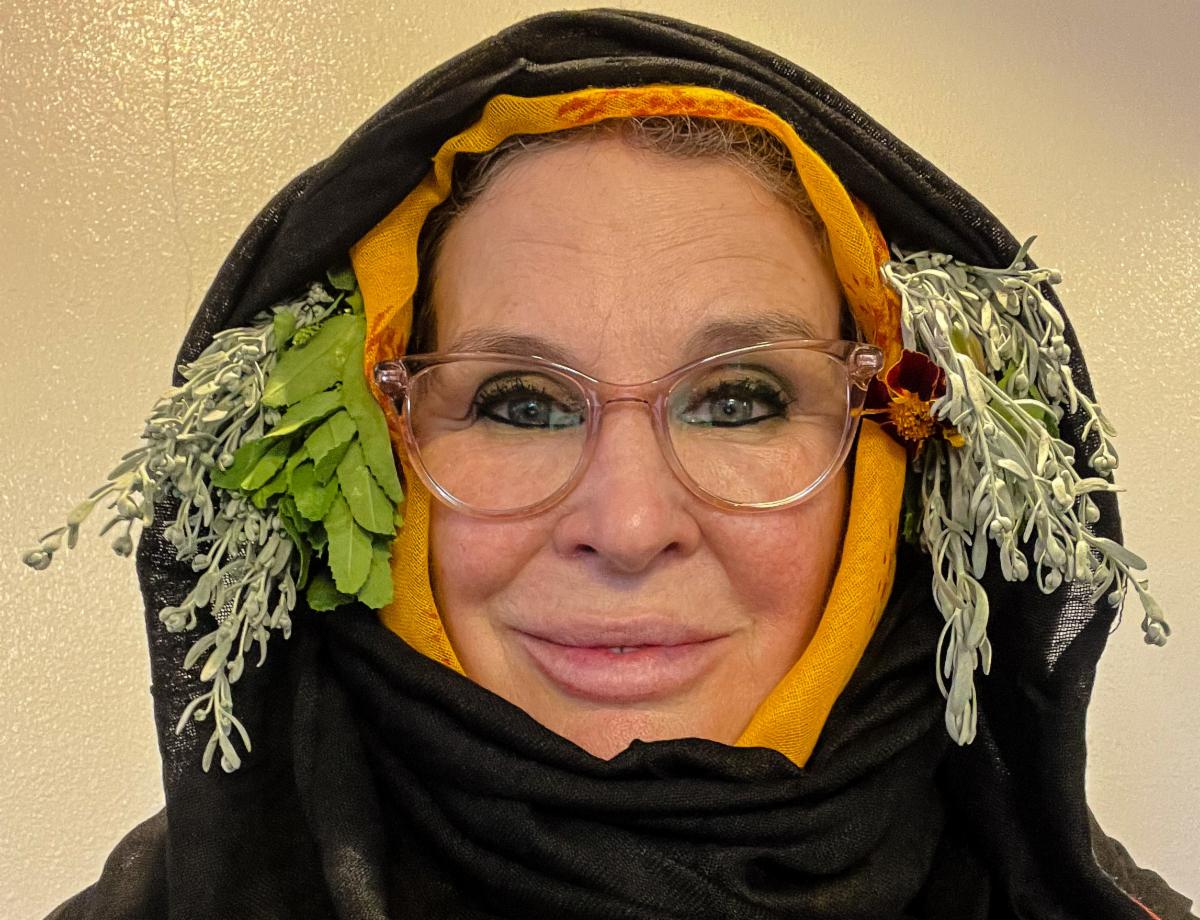
Across the street in Am Dahdooh’s home his daughter and wife bestowed upon me this lovely ritualistic custom. Wearing the black scarf means you are married. Orange you are single. They asked not to be photographed.
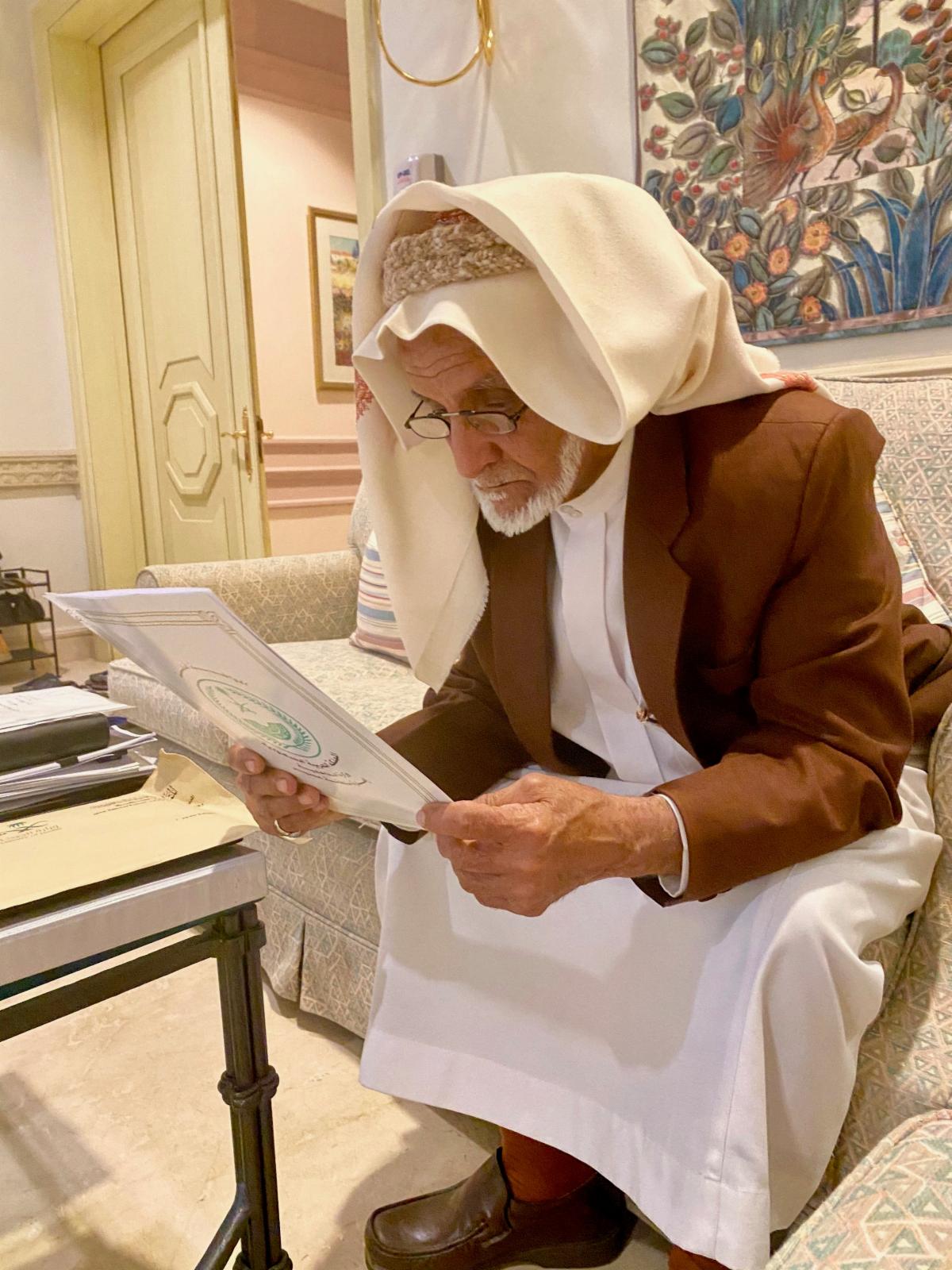
The following day, Am Dahdooh paid a visit to his friend Prince Turki Bin Talal at the Prince’s palace in Abha. I was privileged to be present. In 1950, there was no road to Dahdooh’s mountain village. He visited each village, meeting with the heads of the tribes. They organized villagers to jointly construct a road, mostly with their hands. Over several weeks, their roads converged. The new road allowed trucks to drive to the villages, delivering food, water, supplies, building materials, and more. Dahdooh had come to the palace to ask the Prince if he could arrange to have the road paved in his lifetime. The Prince wrote a memo that the road would be reviewed for a possible upgrade. Politics is personal in the Kingdom. Custom.
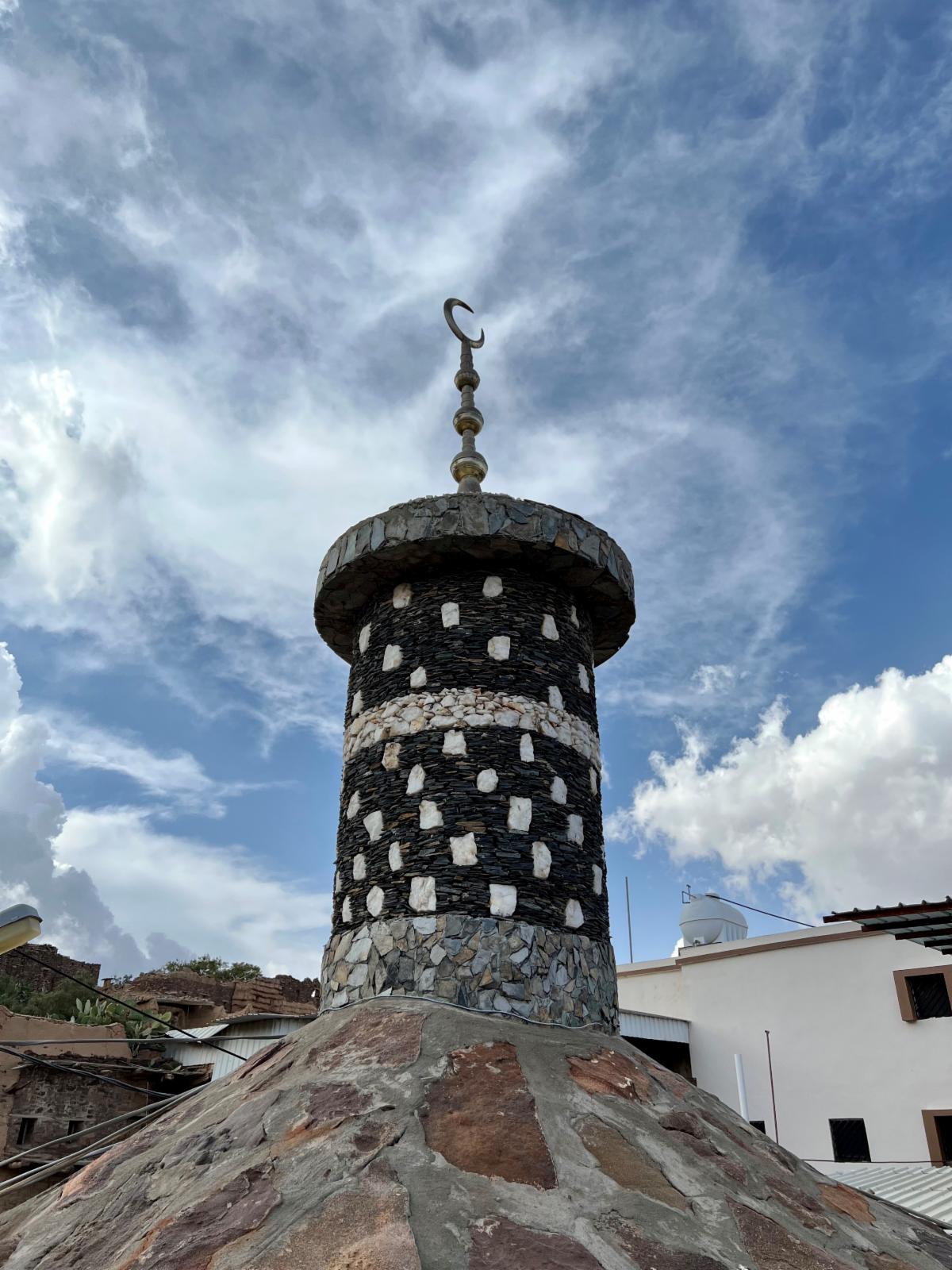
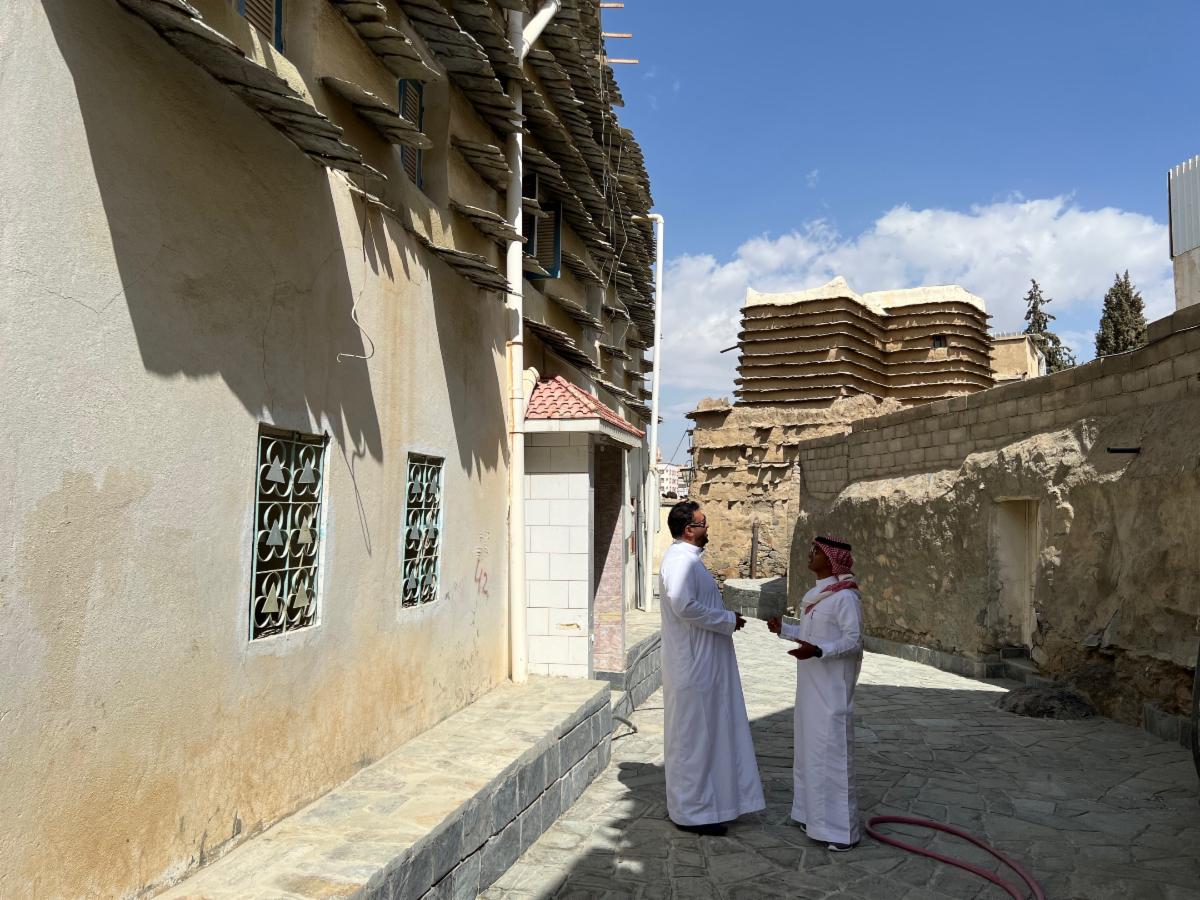
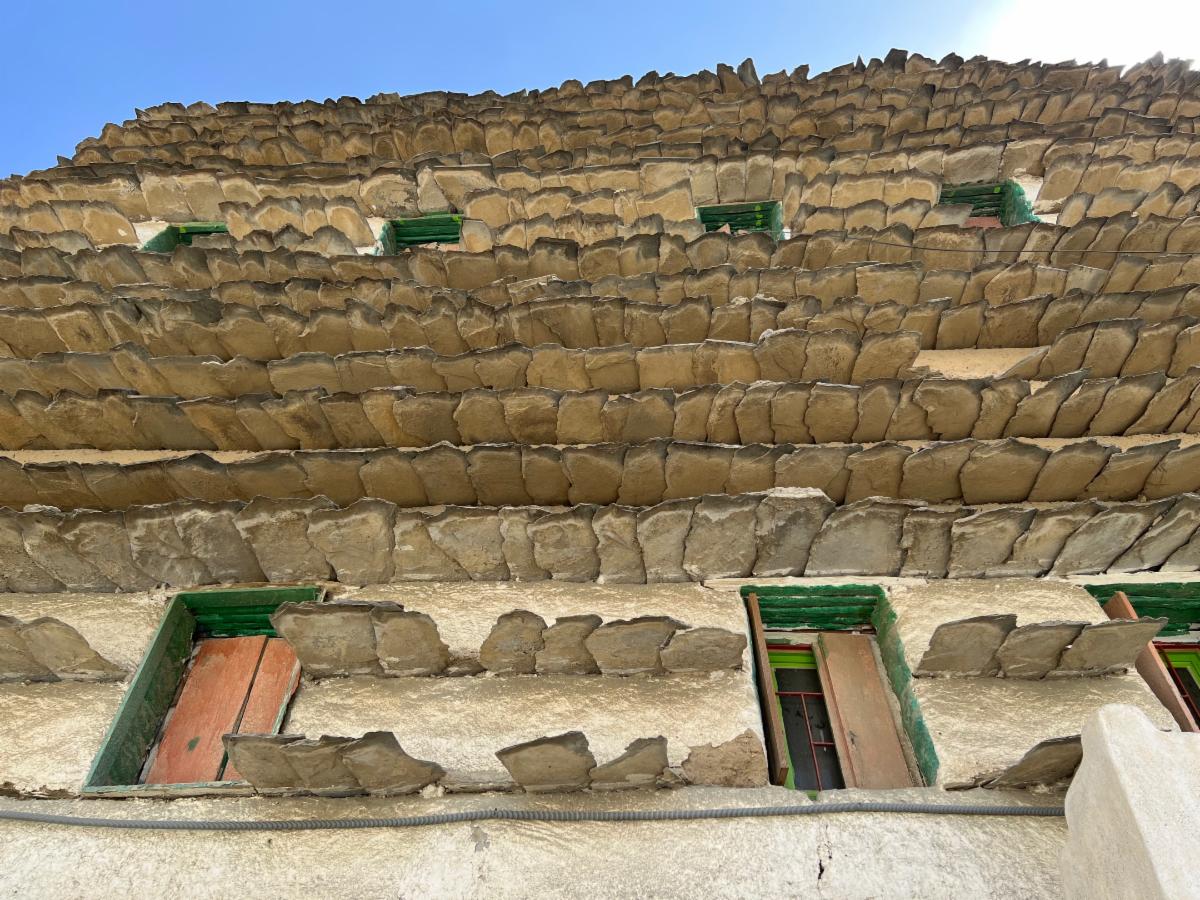
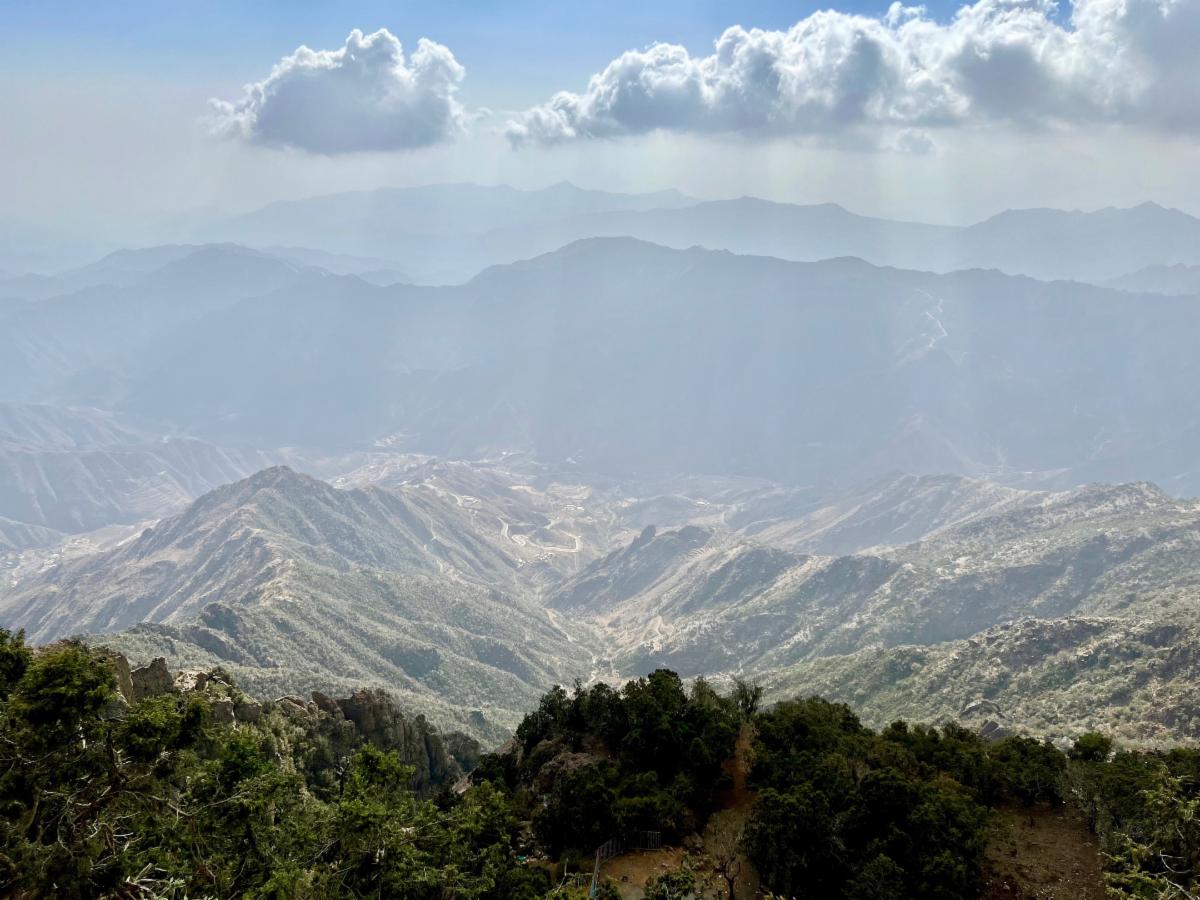
The highest point in Saudi Arabia is found in Asir—Al Soudah mountain rises to 3,133 meters (10,279 feet) above sea level. Asir means ‘difficult’ in Arabic, reflecting the challenge involved in crossing the area’s mountains. It is this remoteness that has helped preserve the distinctive cultural heritage of the region.
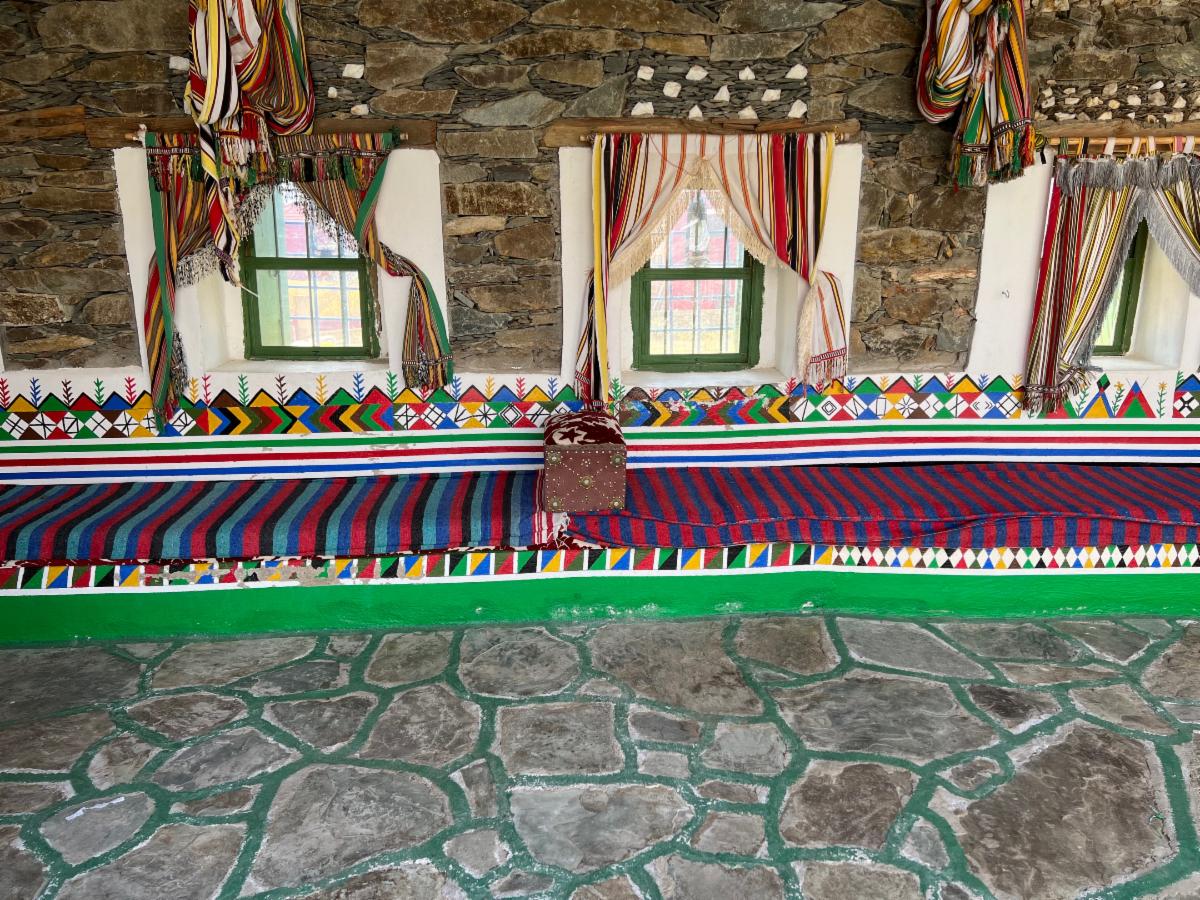
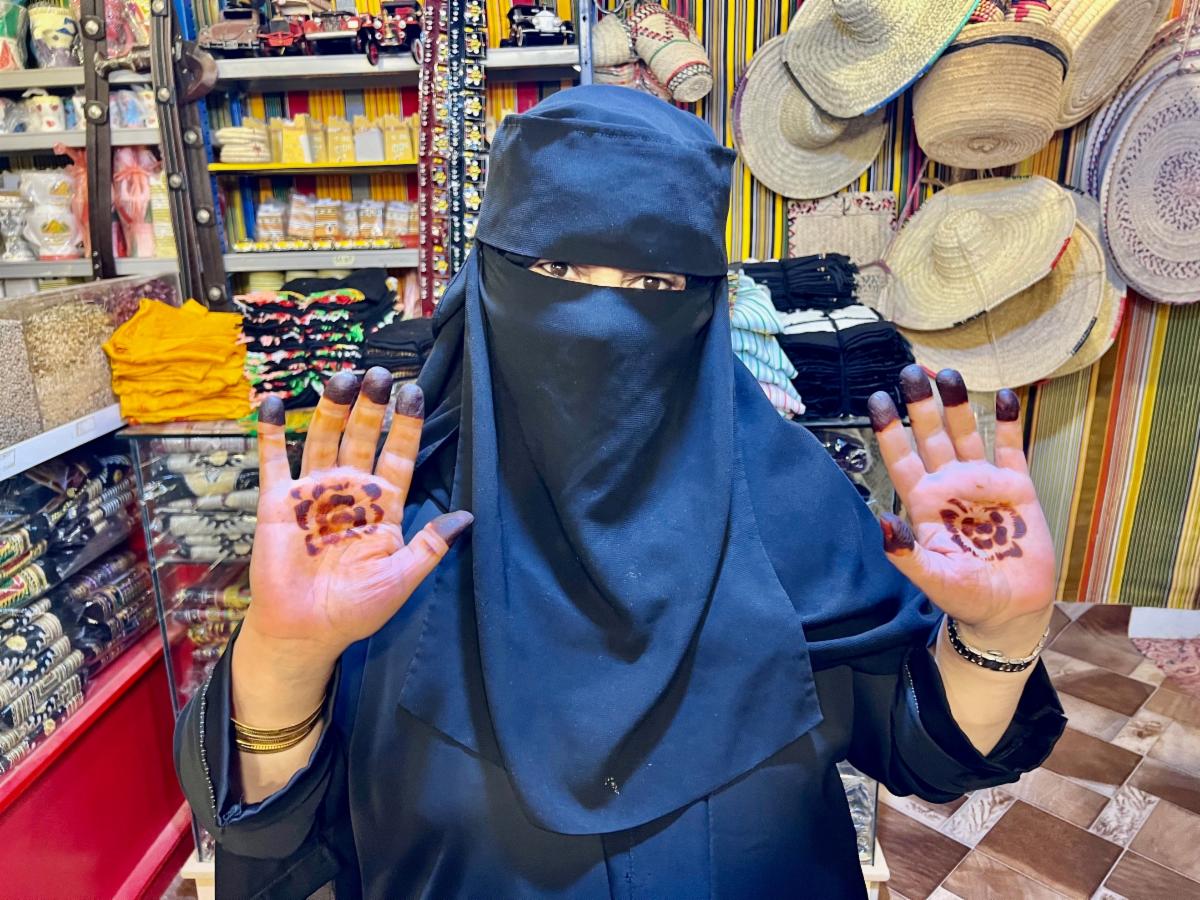
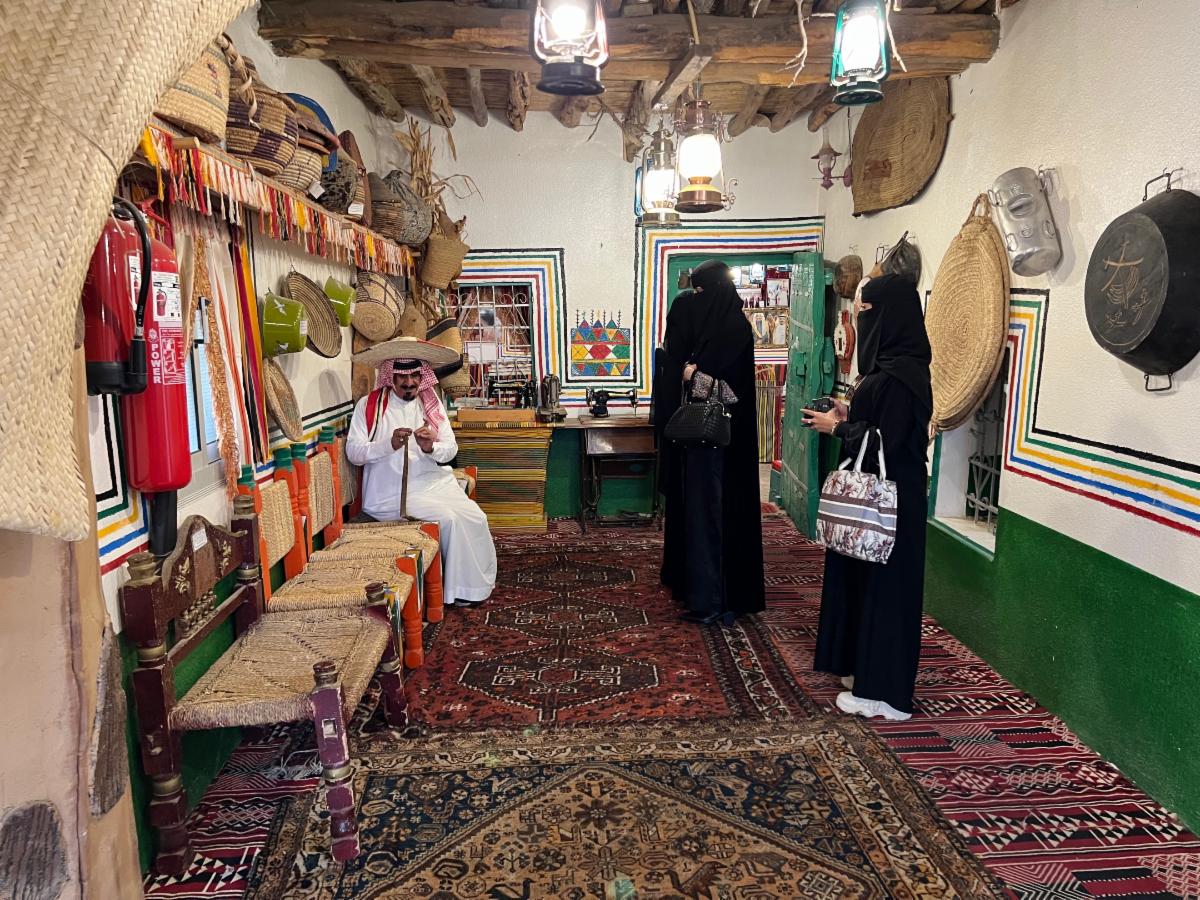
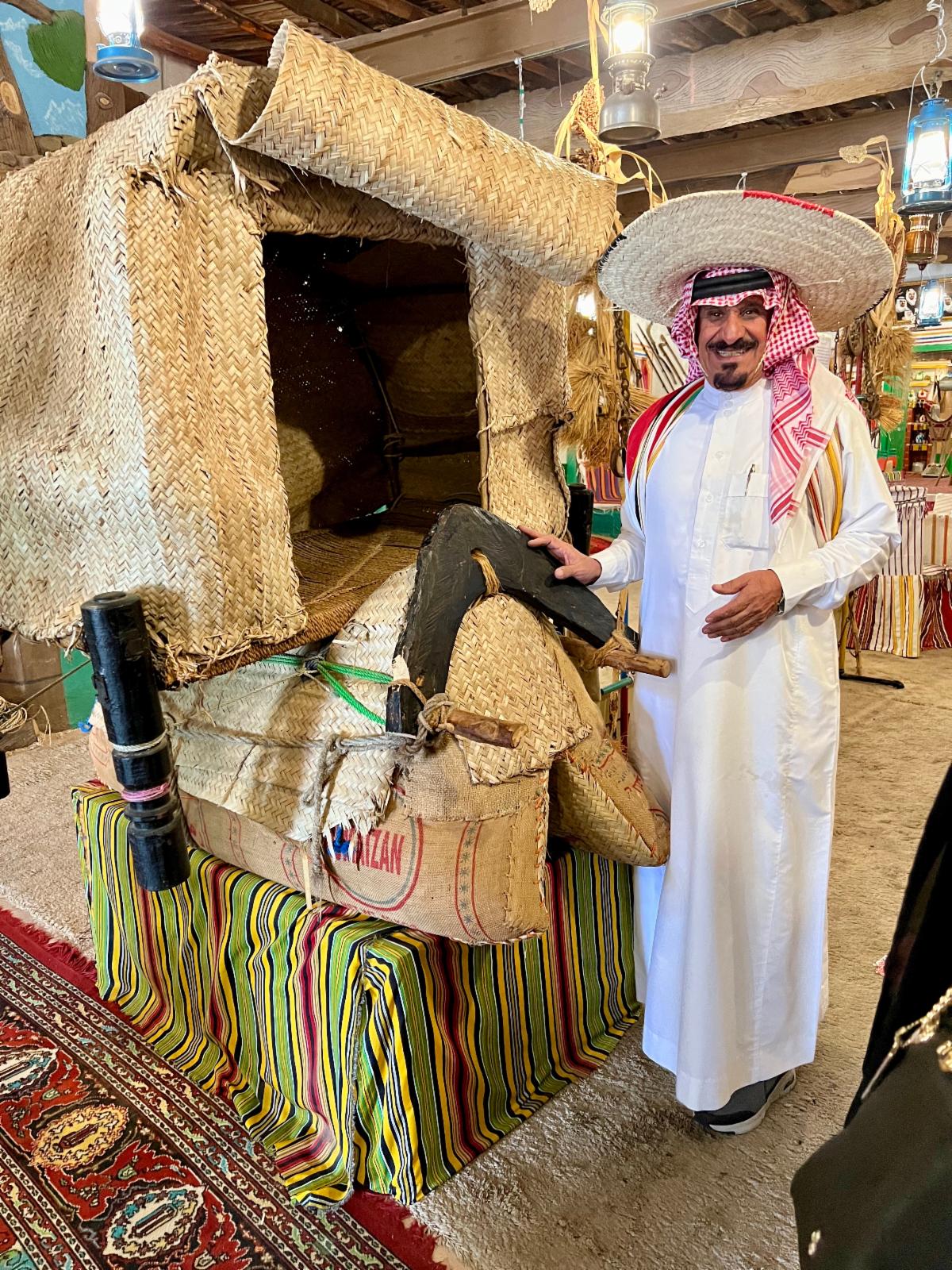
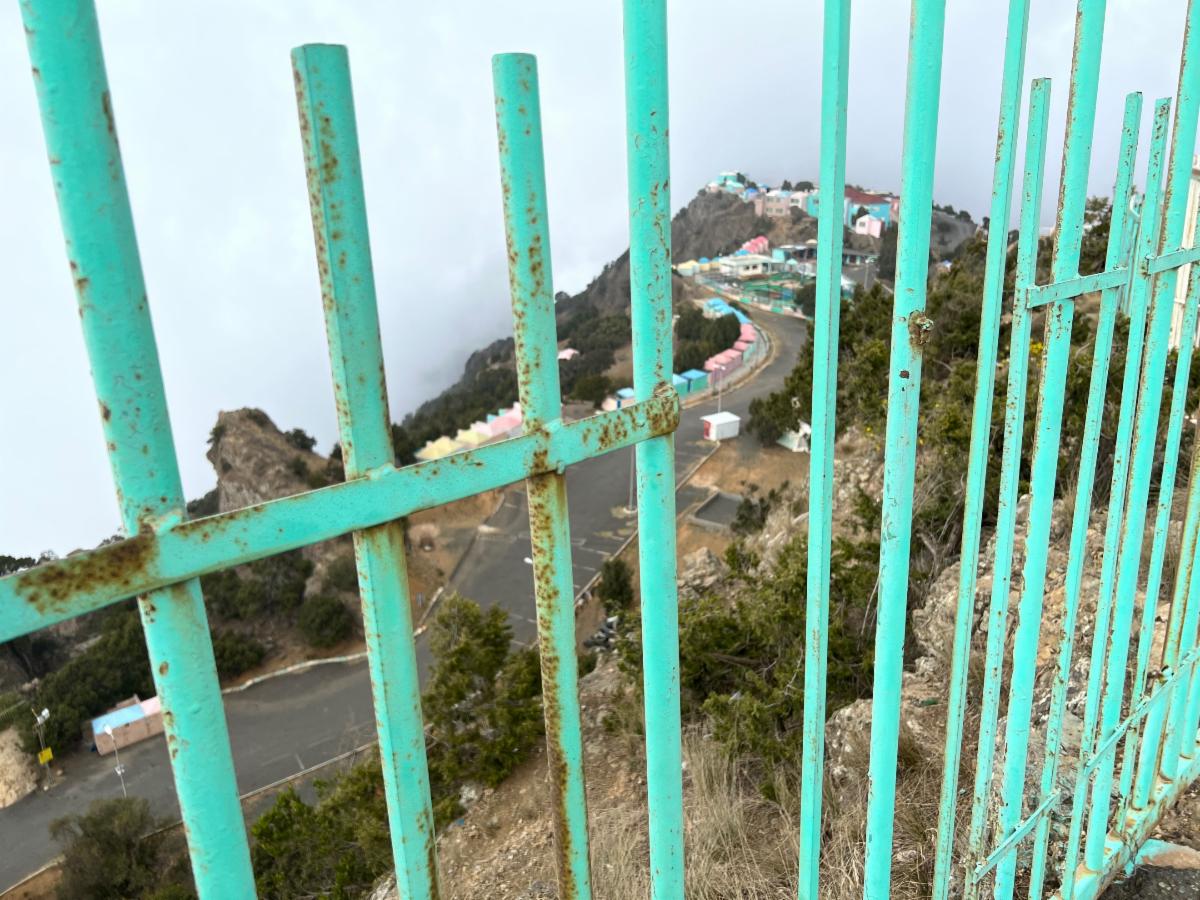

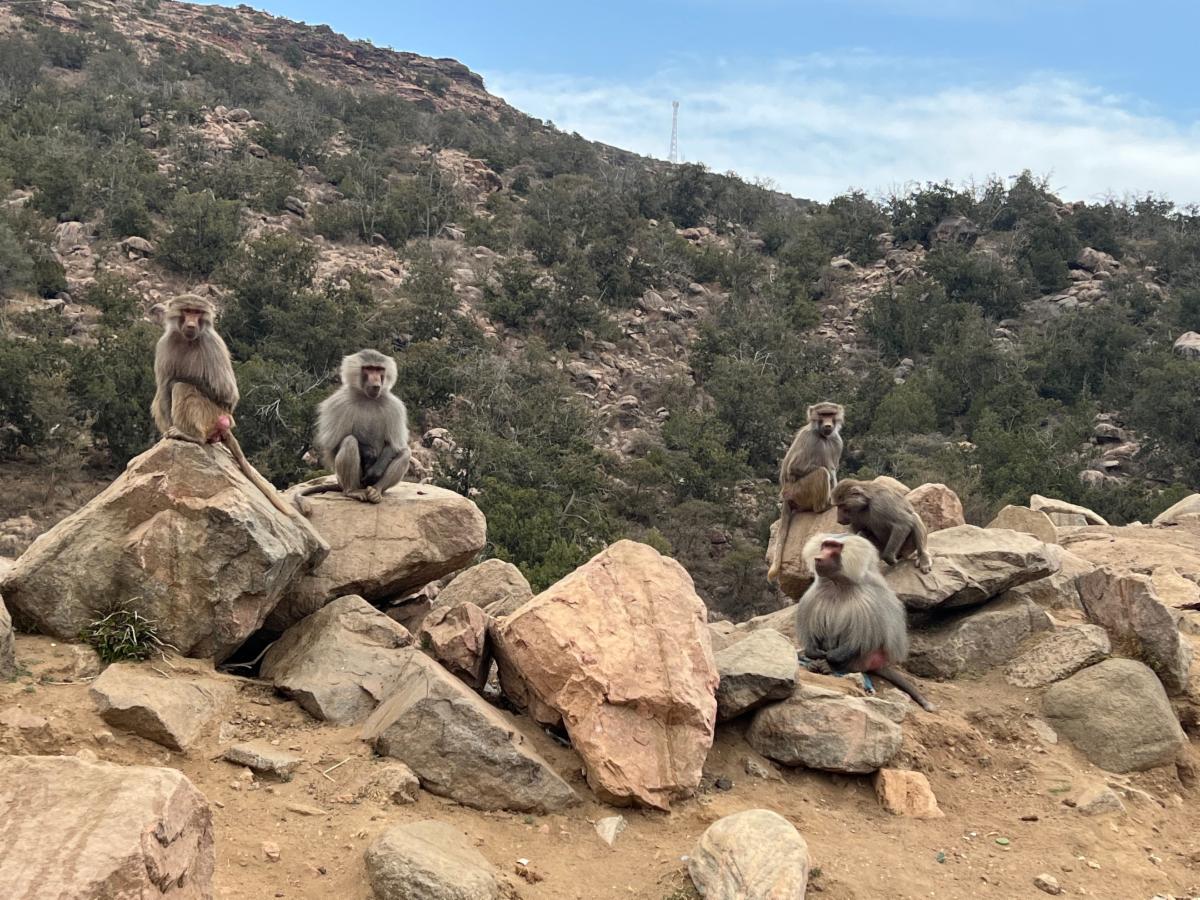
Yes, troops of baboons live in the mountains. They are socially sophisticated and have complex family systems. They are over populated at this point mainly because their natural predators, Arabian Leopards, are now nearly extinct.
I am on the Board of Ambassador Reema Bint Bandar’s Catmosphere.org, an organization that reintroduces cats into their native environments—resetting the ecological balance.
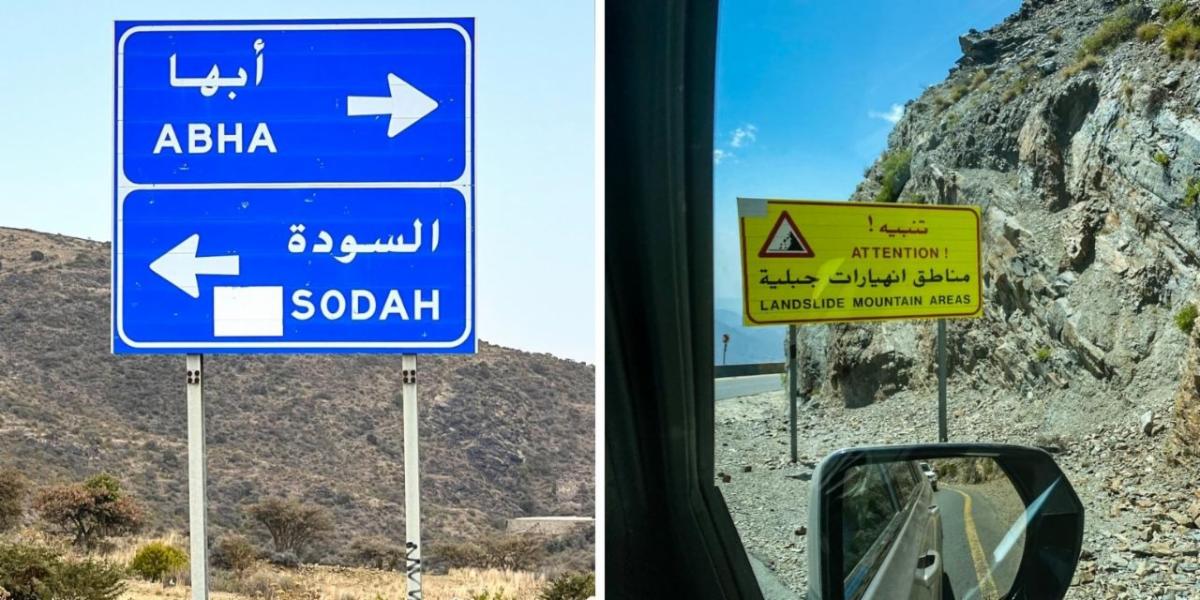

Pure joy driving down Al Soudah Mountain Road with Jaber and Dr. Mohammed.
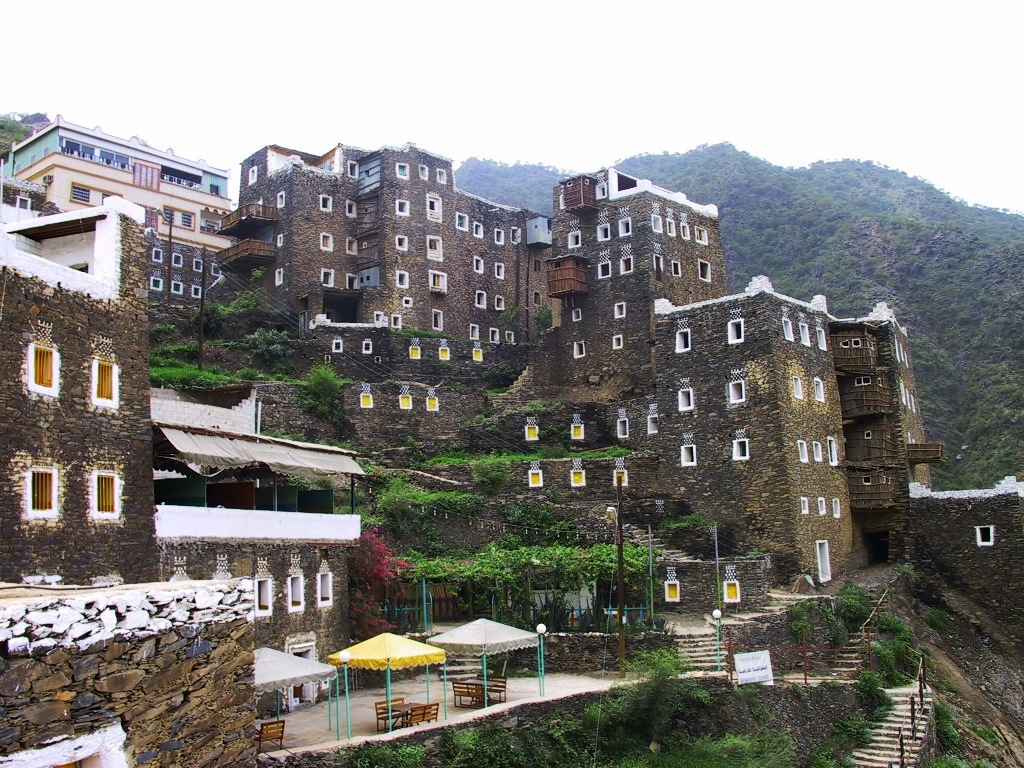
Rijal Village is the capital of the Rijal Almaa Province. Rijal Alma literally means “the brightest men.” This is a UNESCO World Heritage site. Lying along a natural corridor linking Yemen and the Levant to Makkah and Medina made it an important regional commercial center.
In 1825, Asir tribes defeated a Turkish army of 50,000 and forced them to sign a treaty granting Asir independence from the Ottoman Empire. The agreement was the first of its kind in the Arabian Peninsula.
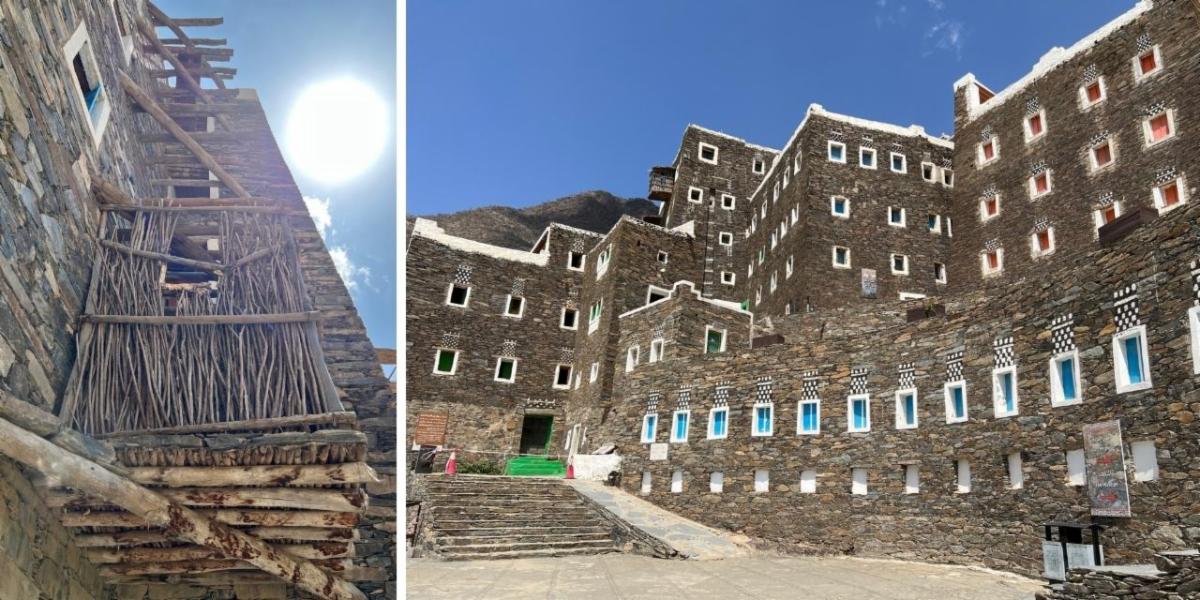
The village is more than 900 years old and consists of 60 multi-story buildings from natural stone, clay, and wood.

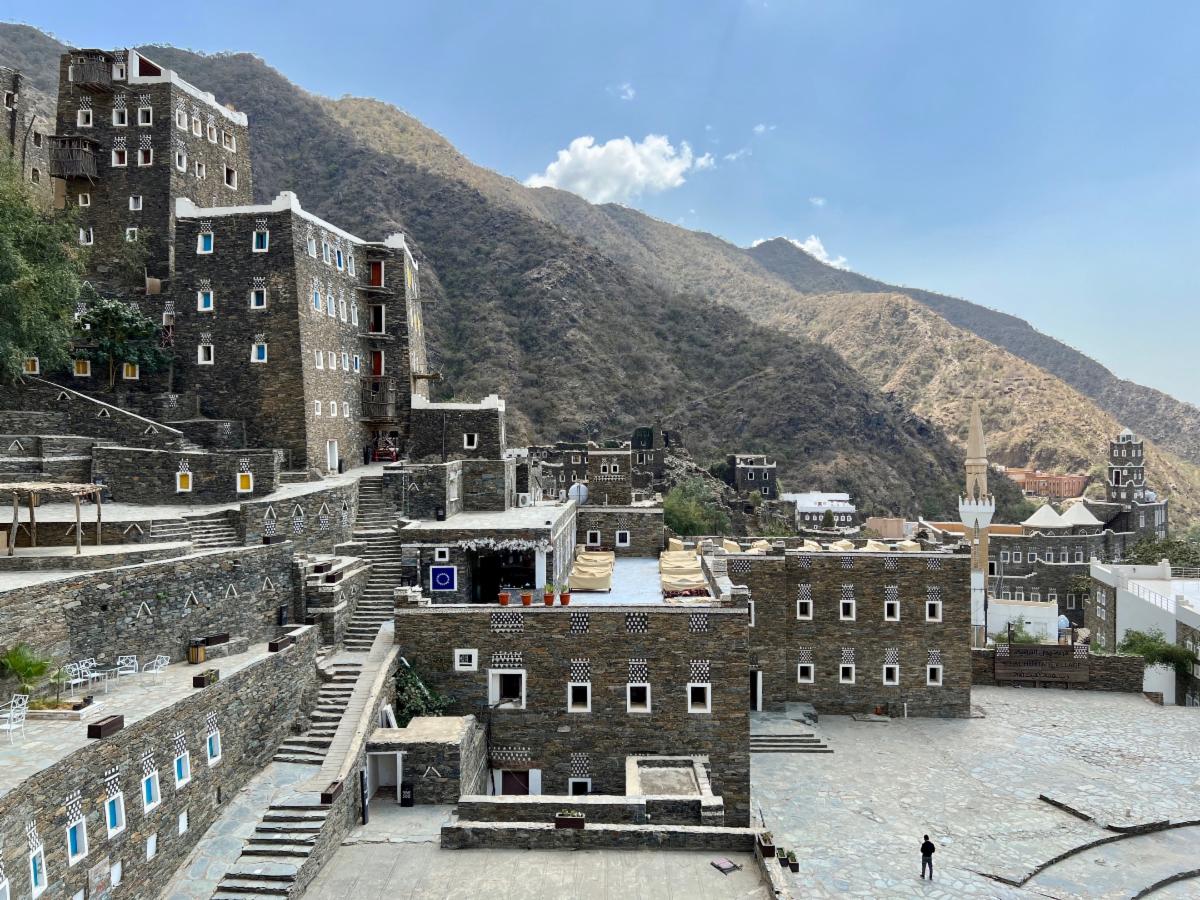
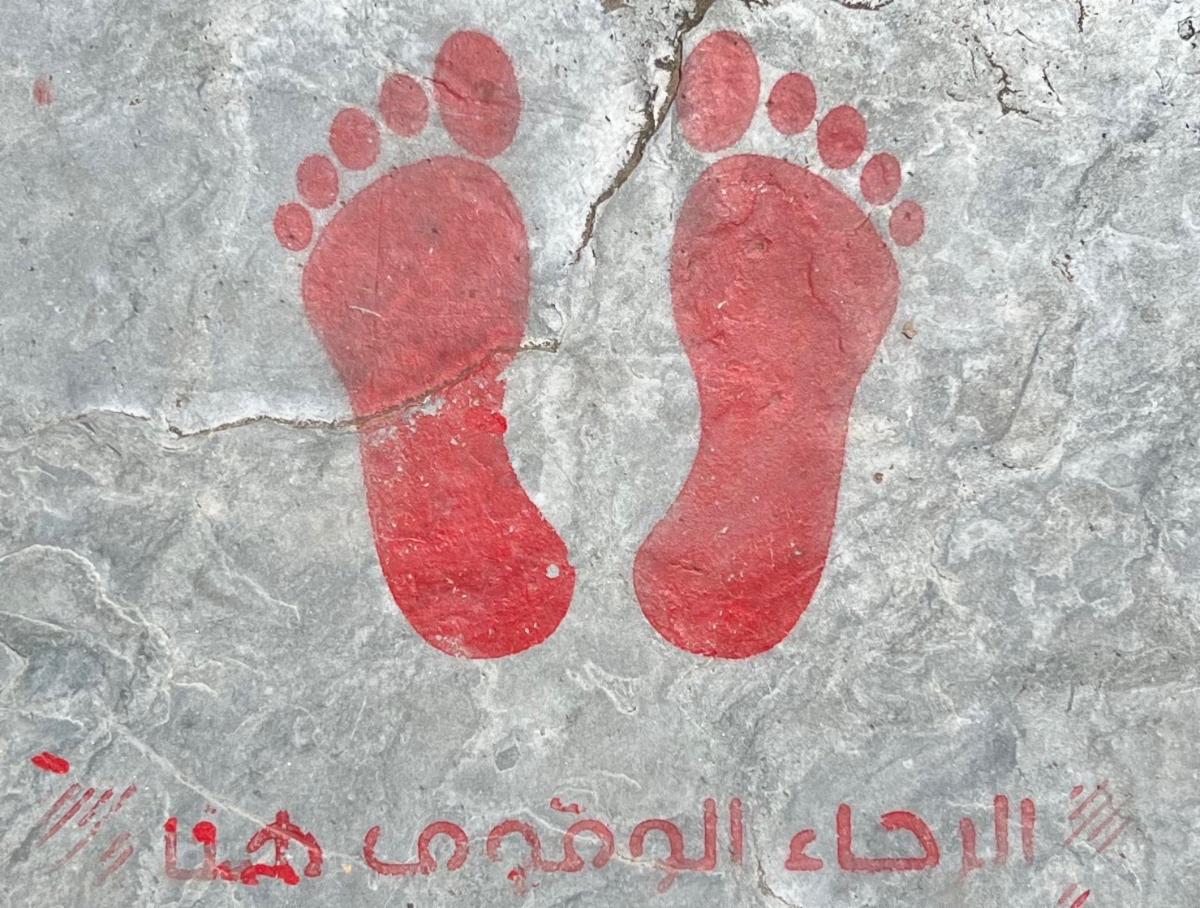
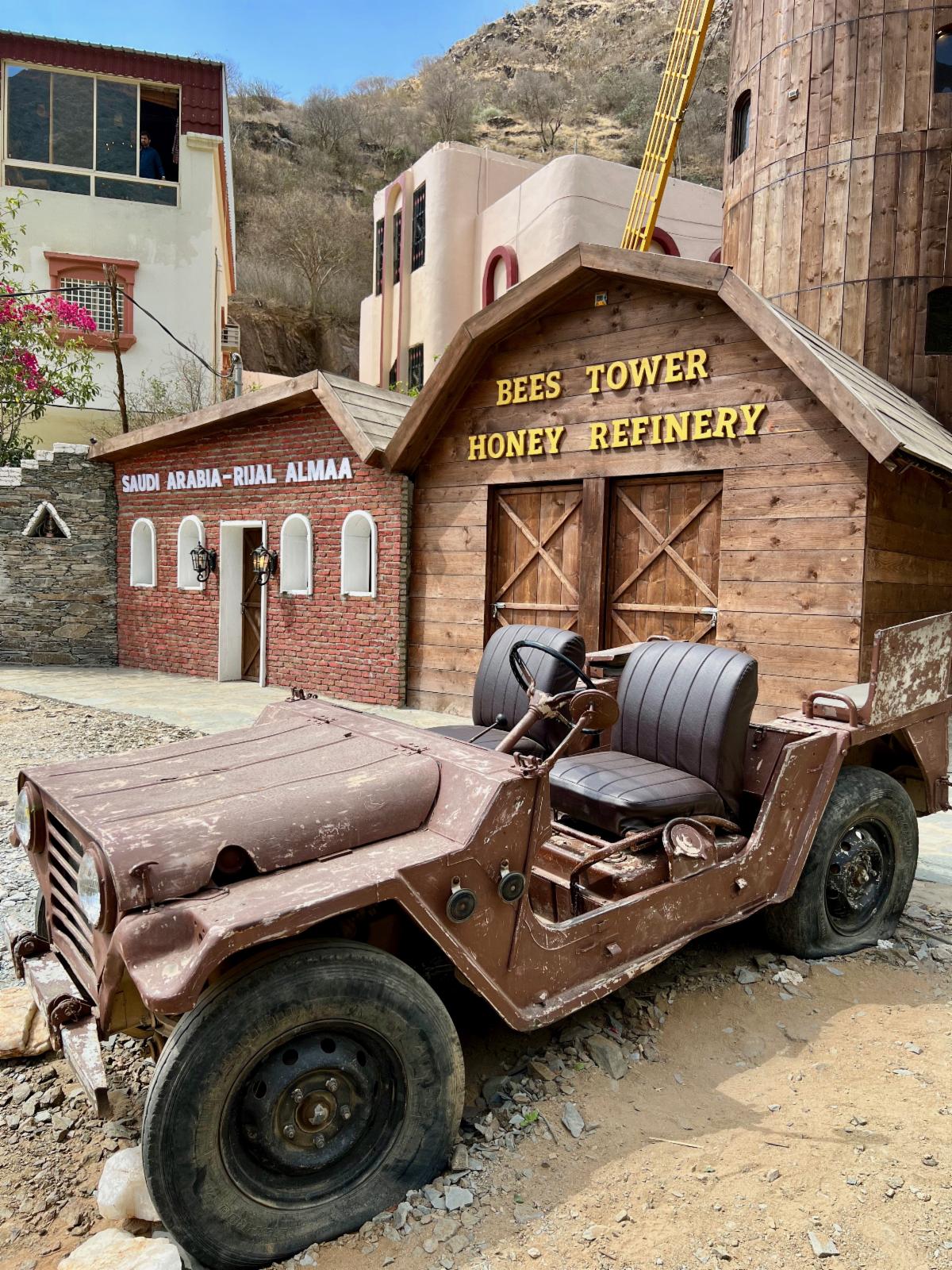
Not far from the UNESCO World Heritage site is the Bees Tower Honey Refinery.
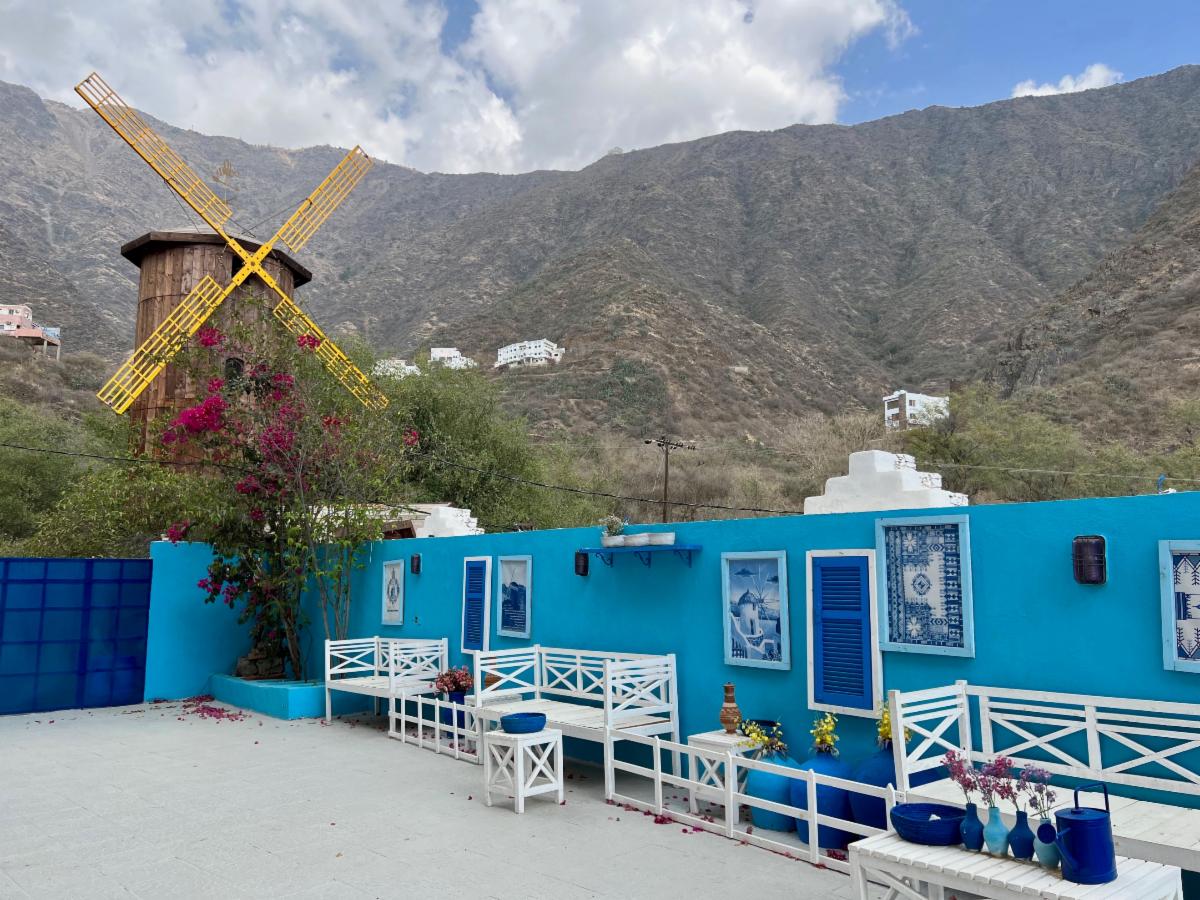
Honey is deeply rooted in the culture and trade. It is one of the most popular products from the Kingdom’s southern highlands. Artisanal honey is held in high regard and considered medicinal. The local honey of the southwest has many varieties, the most famous being Sidr honey. It is an essential part of the breakfast ritual for many Saudi Arabians.
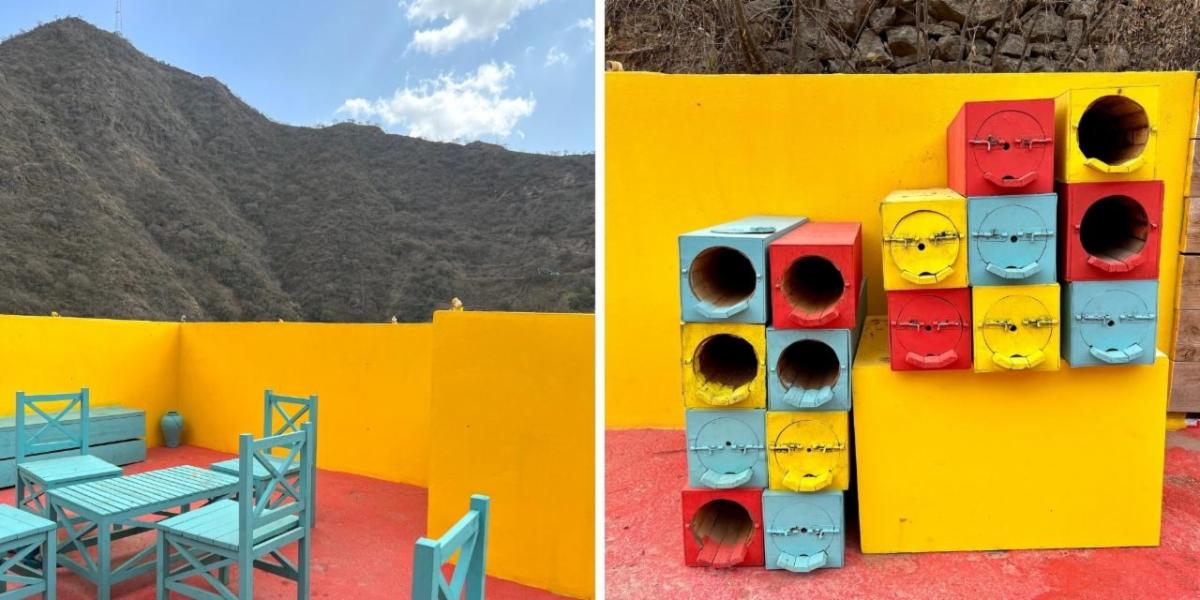
Methods of beekeeping and honey production vary between hobby and commercial purposes. Some beekeepers create special hives in backyards, parks, and near their homes and farms. Along the mountain roads, beehives are set up in numbers from a dozen to hundreds. The projects hope to promote the culture of beekeeping in the Kingdom’s Vision 2030 plan to diversify the labor market.
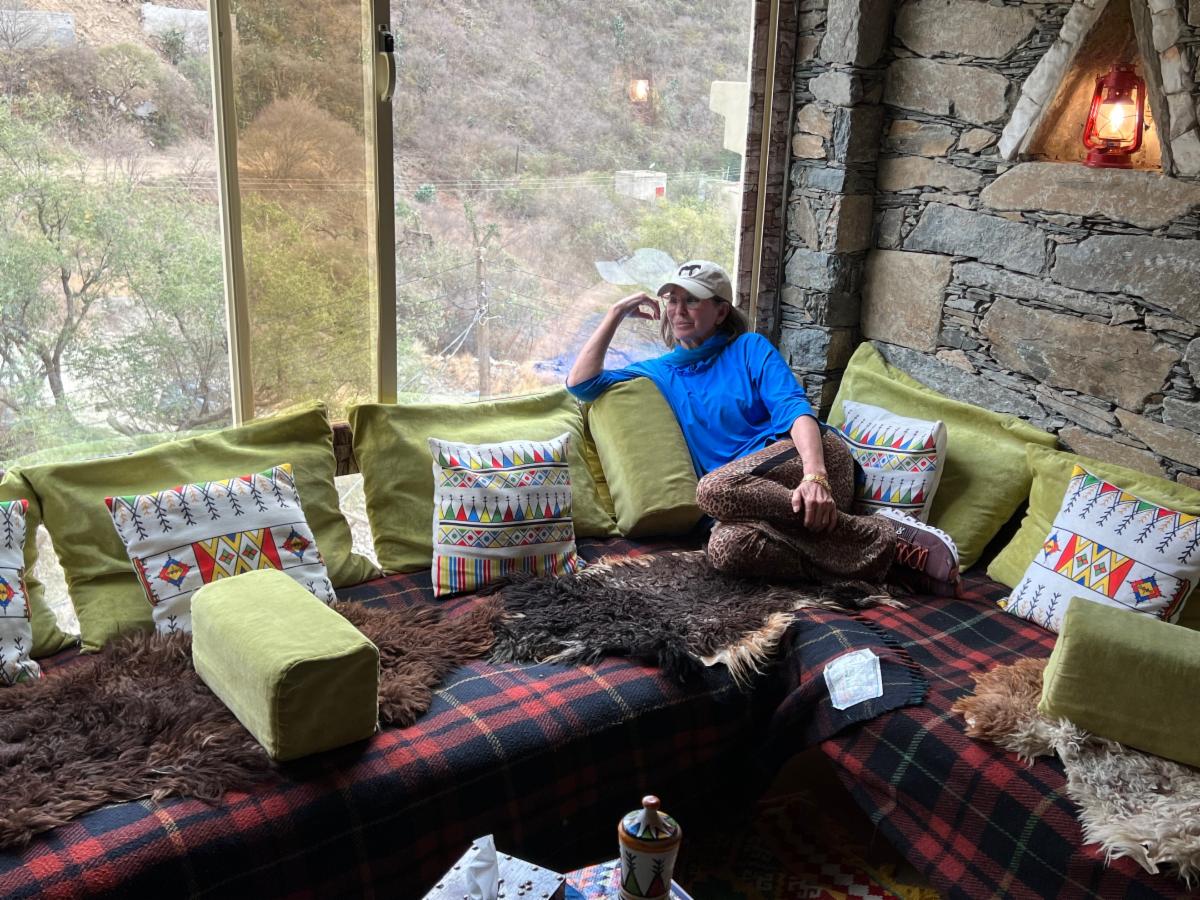
You can have a cup of tea with your favorite honey! This honey hut compound is part of the rural and tourism culture.
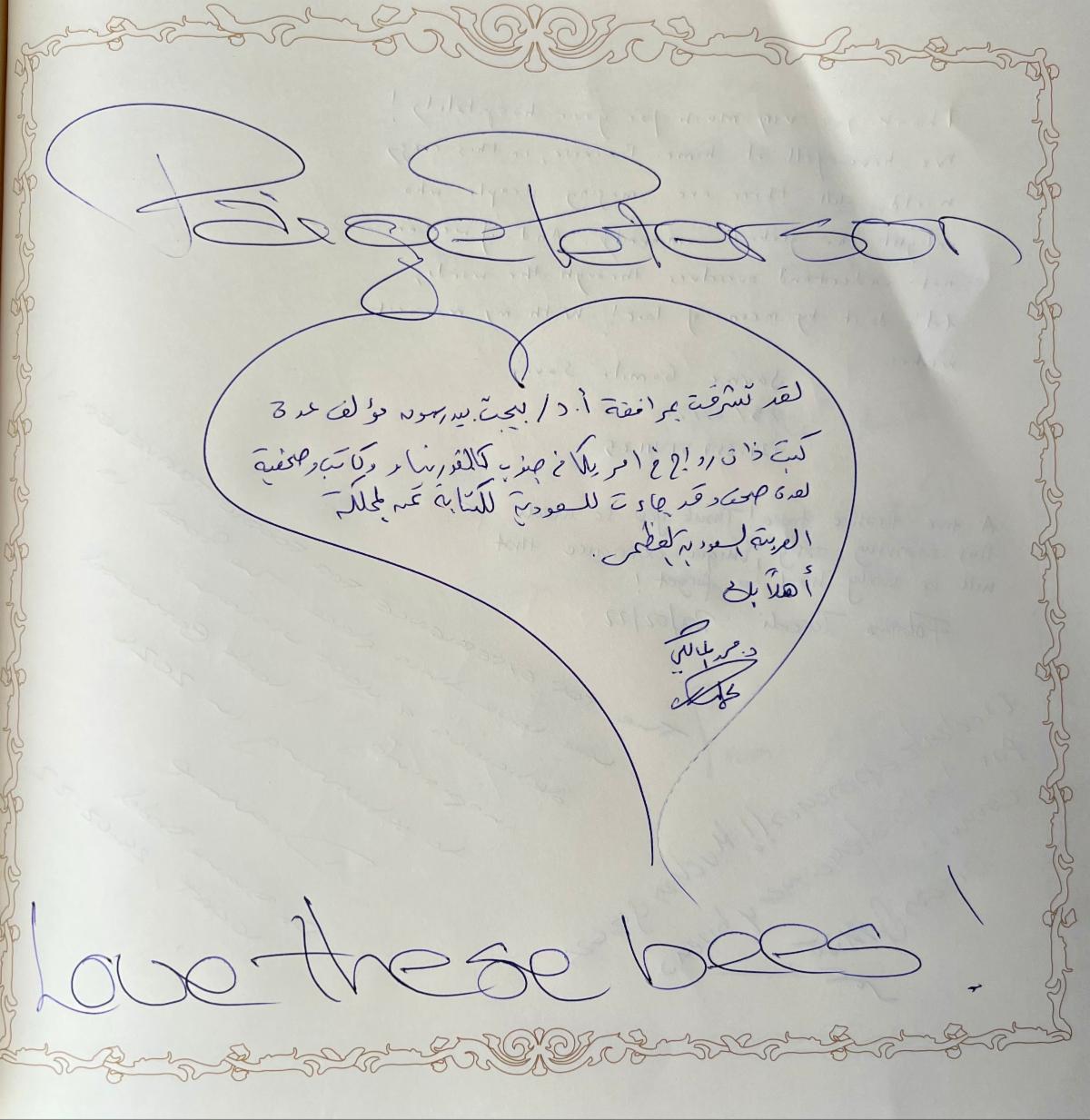
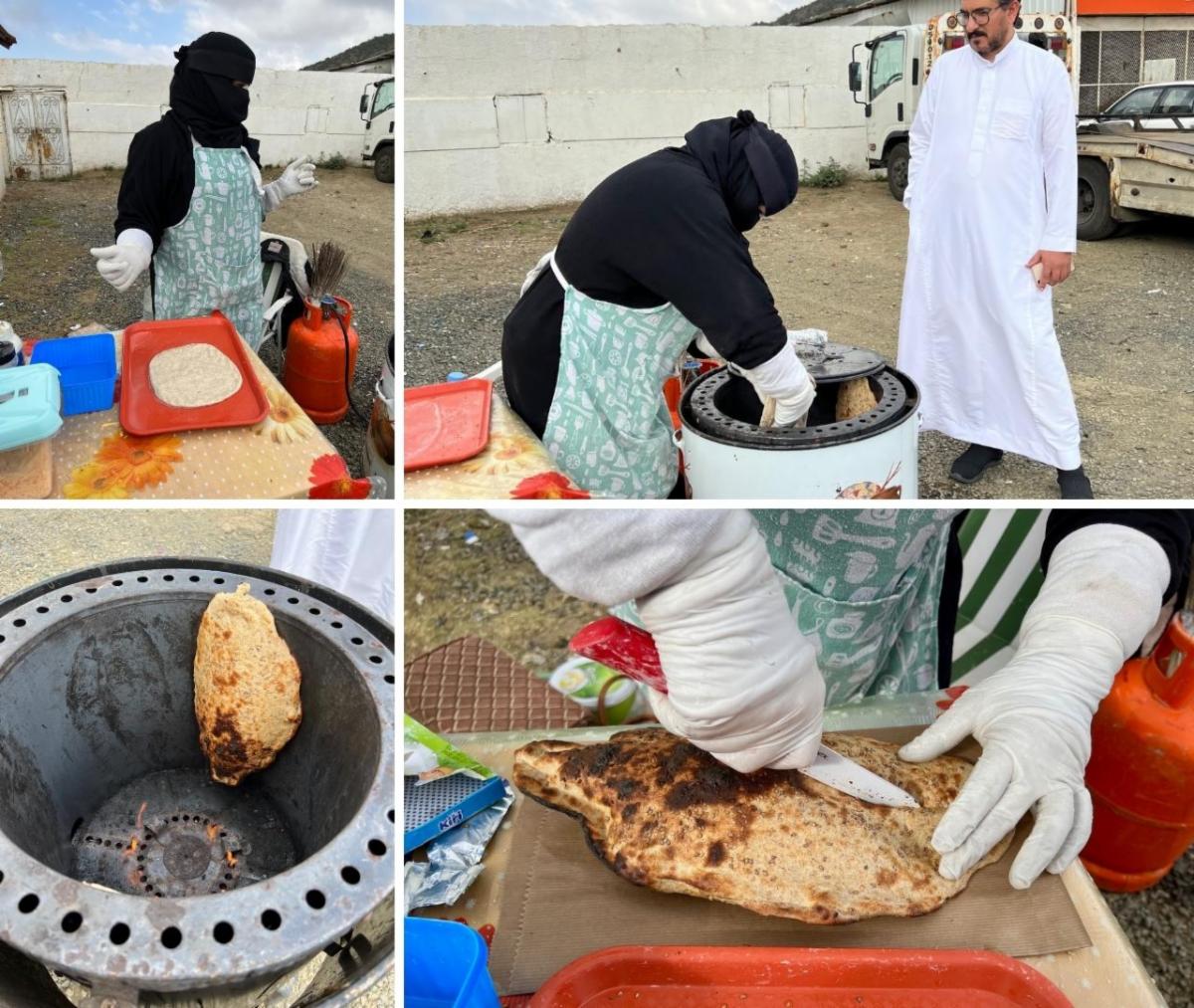
Oven-baked bread called Khobz Al Tannour/Khobz Al Mefa is a popular street food in Asir. Dough is padded down with sharp cheddar cheese piled high before being folded over.
It was so delicious I ate the entire thing!
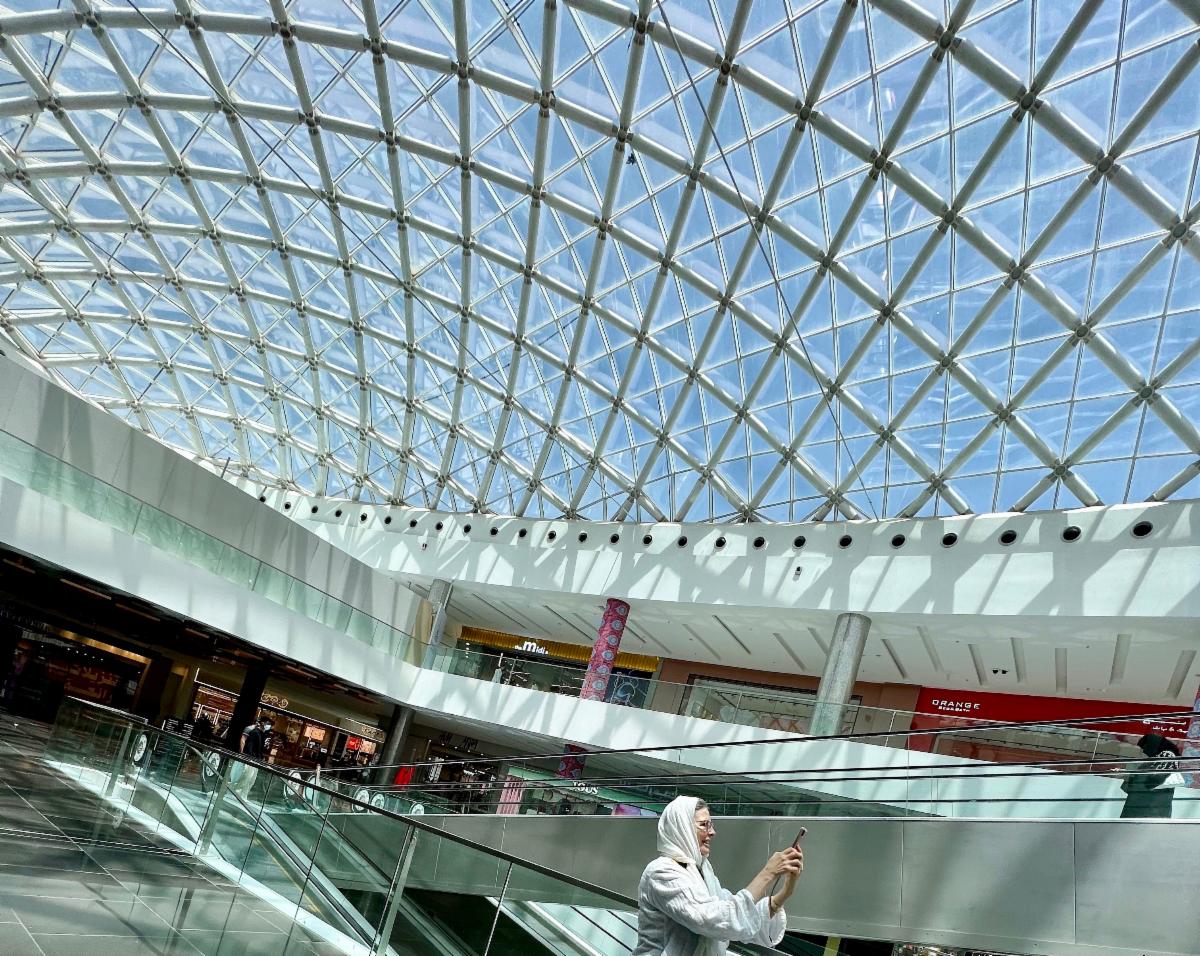
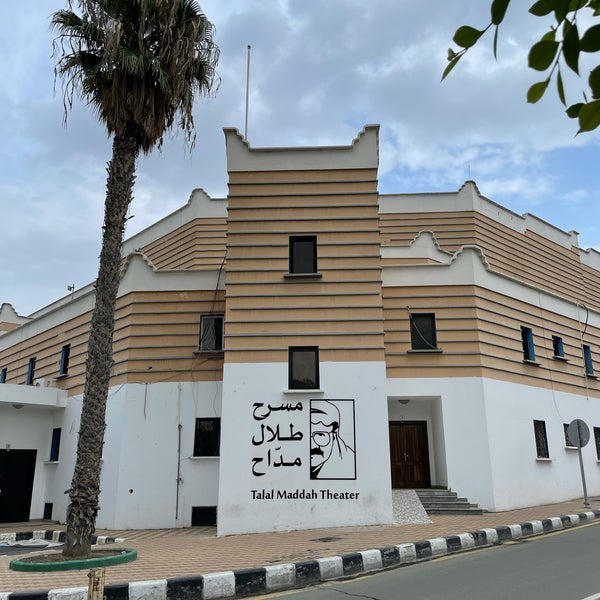
Talal Maddah was a popular Saudi musician and composer. He died suddenly on stage in August 2000 at the Al Muftahah Theater. In 2019, the Minister of Culture renamed the 3800-seat theater Talal Maddah Theater in his honour.
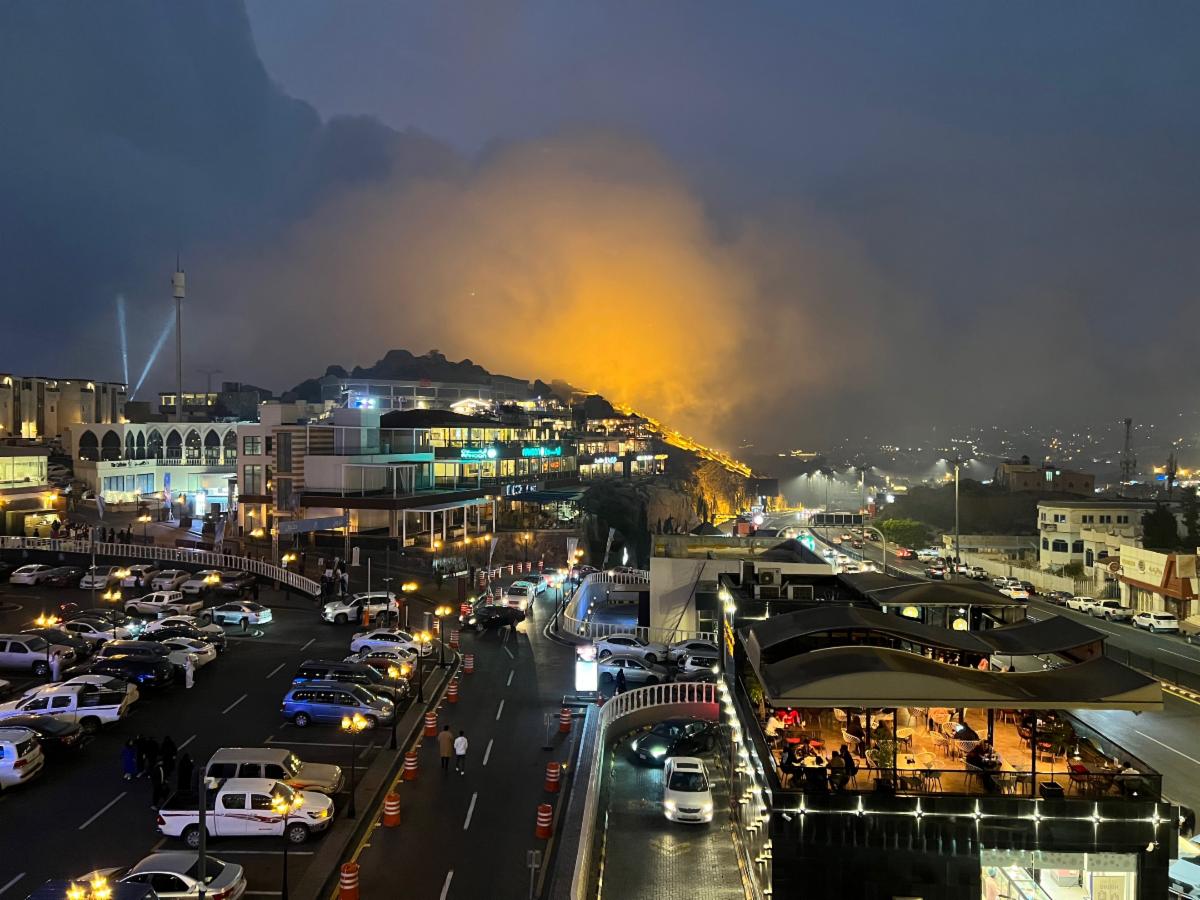
A fog floating over the mountains highlights the bright lights of a vibrant coffeehouse culture night life in Abha.
